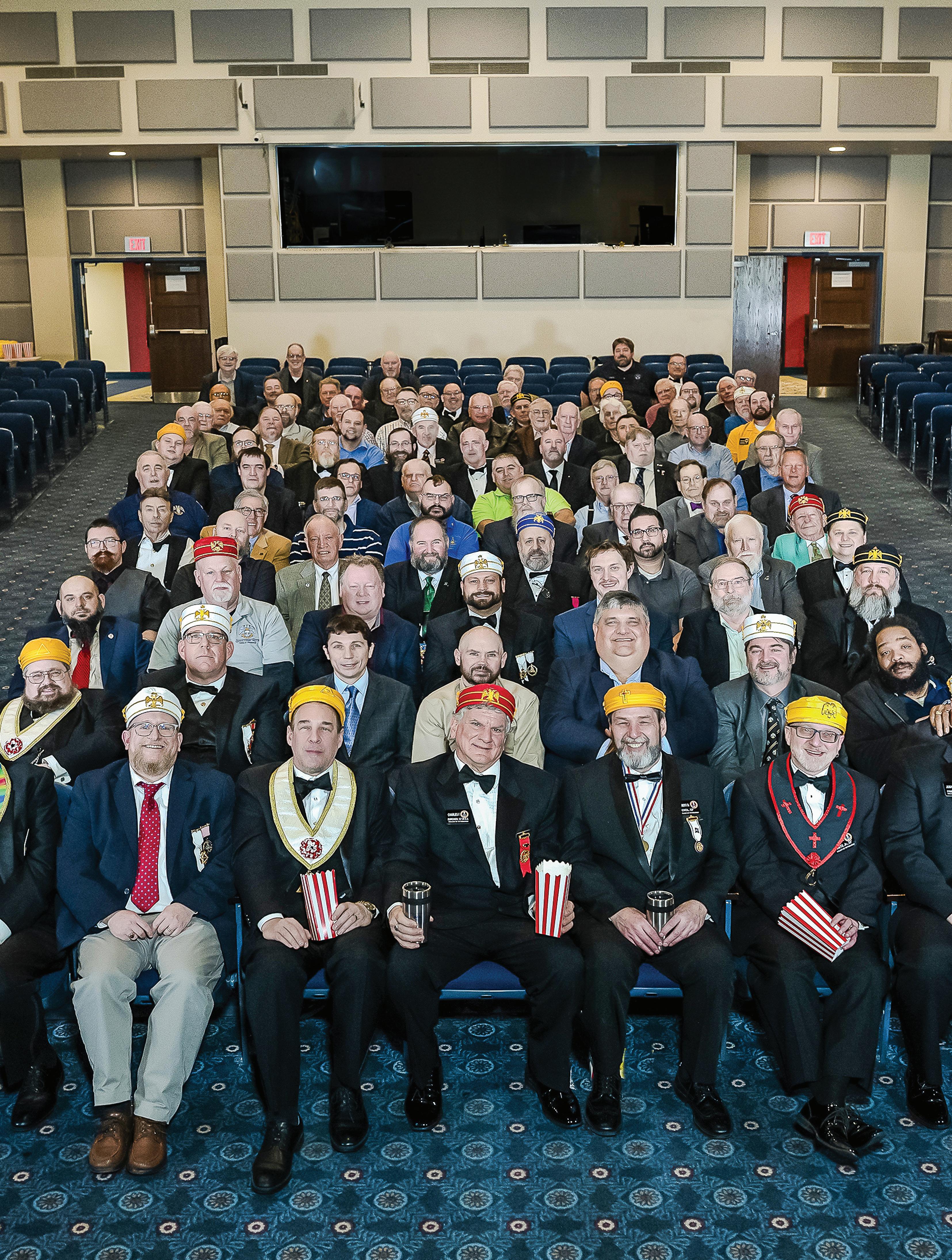

TM
24
28
40 A MAGAZINE OF 32˚ SCOTTISH RITE FREEMASONRY TM SPRING 2024 VOL. 55 | NO. 1
Journey On[line], Brethren Masonic Brother Helping Ukrainian Refugees Masons Got Game p
p
p
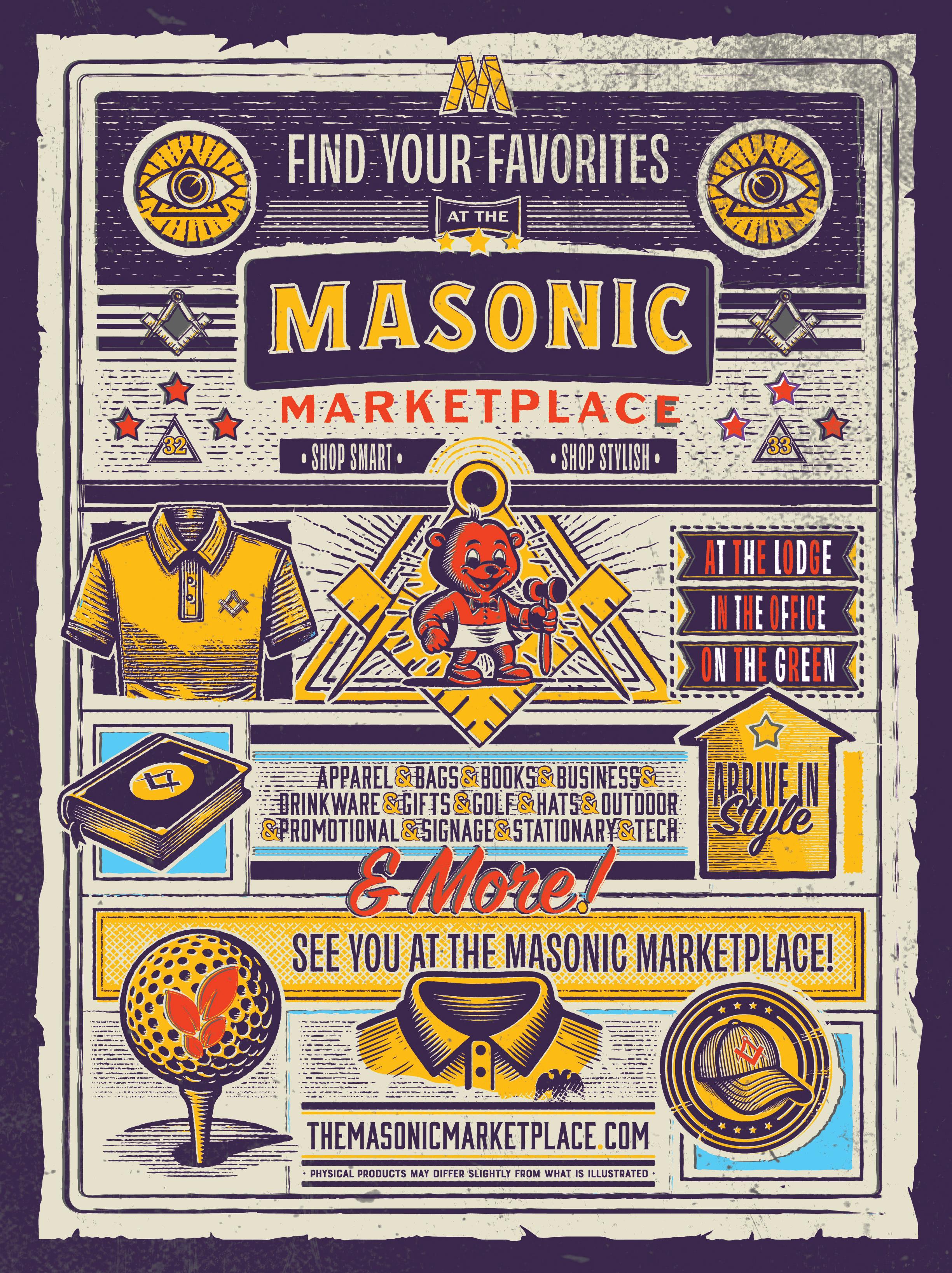


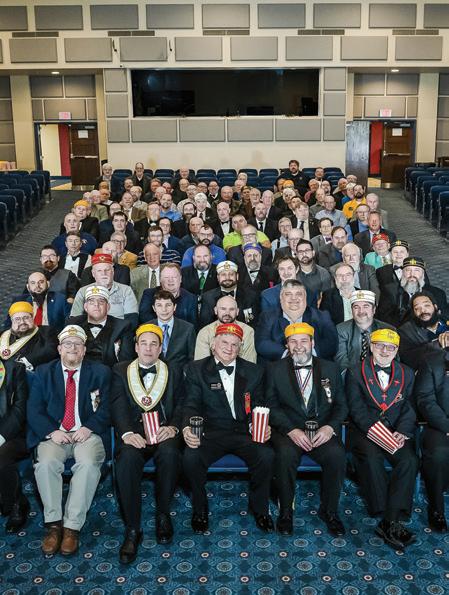
The cover of this issue of features members of the Valley of Pittsburgh at their watch party for the season five premiere of Thursday Night at the Rite. This season featured seven different Valleys from all across the jurisdiction, each adding their personal touch to our ritual work.
Also in this issue, you will read one Brother’s story of just how important Thursday Night at the Rite has been for his Scottish Rite journey. See “Journey On[Line], Brethren” on p. 24.
Plans for season six are already in the works. Check back for details.

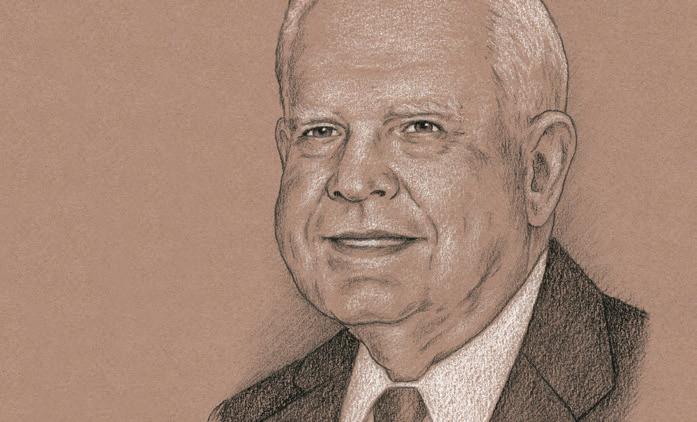





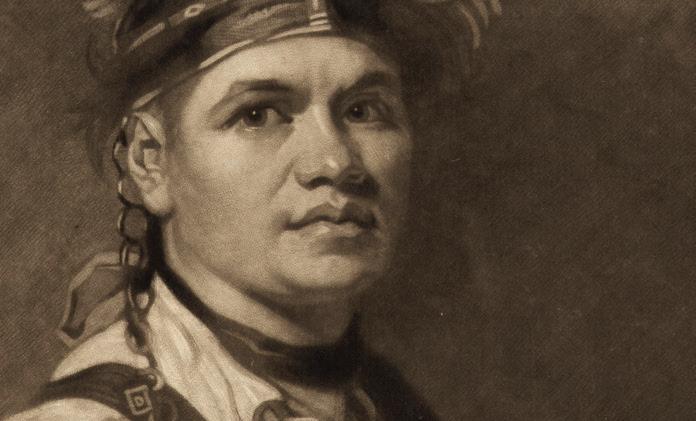
3 Spring 2024 ScottishRiteNMJ.org EDUCATION 16 18th Degree Knight of the Rose Croix of H.R.D.M. 20 31st Degree He Ain’t Heavy MEMBERSHIP 40 Masons Got Game 42 Around the Jurisdiction MASONRY 46 Remarkable Freemasons: Haudenosaunee Leaders E M M 4 Leadership Report The Path Forward: Our Next Chapter 6 From the Editor’s Desk It Makes a Difference to That One 23 Southern Jurisdiction Scottish Rite Journal FEATURES 24 Journey On[line], Brethren 28 Masonic Brother Helping Ukrainian Refugees Spring 2024 Inside this issue…
On the Cover
CHARITIES 32 Giving Tuesday: A Night of Charity 2024 34 Children’s Dyslexia Center’s Tutor, Jay Werner One Child at a Time 38 Arizona and Florida Commander’s Tour 2024 C THE NORTHERN LIGHT N NEWS 8 Local Vermont Community Honors the Four Chaplains 8 In Memoriam: Ill. Thurman C. Pace Jr., 33° 9 New Director of Scottish Rite Charities CULTURE 10 Masters’ Chairs 14 Lodge of St. Andrew 1768 Summons C Journey On[line], Brethren Masonic Brother Helping Ukrainian Refugees Masons Got Game p24 p28 p40 SPRING 2024
PHOTO BY TIM MCKIERNAN
Our Next Chapter
by Walter F. Wheeler, 33˚, Sovereign Grand Commander
Throughout history, Freemasonry has been a beacon of moral rectitude, guiding its members through times of uncertainty and challenge. We are bound by the sacred duty to uphold the values of brotherhood, integrity, and enlightenment, even when faced with formidable choices.
Making Difficult Choices
As we navigate the intricate paths of our Masonic journey, we are often called upon to make decisions that test not only our resolve but also our commitment

to our principles. In times of adversity, it is paramount that we remain steadfast in our convictions. We must draw upon the teachings of our Craft, seeking wisdom from the rituals and symbols that illuminate our path. Each decision we make is a reflection of our dedication to the tenets of Freemasonry and our commitment to the betterment of ourselves and society.
However, let us not forget that making difficult decisions requires courage and discernment. We must be willing to confront adversity with resilience and humility, knowing our actions are guided by a higher purpose.
In the face of uncertainty, I implore you to trust in the wisdom of our collective Fraternity. Lean on your Brethren for support and guidance, for it is through unity that we find strength.
May we approach every decision with clarity of mind, integrity of spirit, and unwavering commitment to our sacred obligations.
As members of the Scottish Rite, we are entrusted with the responsibility to lead by example, to illuminate the path for others, and to uphold the noble principles upon which our Order was founded. May we approach every decision with clarity of mind, integrity of spirit, and unwavering commitment to our sacred obligations.
Conference of Grand Masters 2024
The Supreme Council is pleased to share the remarkable success of our marketing team’s recent endeavors at the Conference of Grand Masters of North America, held in February in Seattle. Our delegation represented the Scottish Rite, NMJ, with distinction, highlighting not only our unwavering principles but also our pioneering spirit and visionary approach to Freemasonry.
Linda Patch, Senior Director of Marketing & Communications, presented survey findings from 3,500 men about their perception of Freemasonry and the messaging
PATH FORWARD –
THE
The Northern Light
4 ScottishRiteNMJ.org
that best resonates with them. This research is revealed in The Path Forward: Empowering the Future of Freemasonry.
Together, there is no limit to what we can accomplish.
Linda’s presentation of The Path Forward was met with enthusiasm by Masonic leaders from North America and beyond who were eager to relay the data to their teams and execute the key deliverables necessary to grow Freemasonry – one being consistent follow-up with men looking to join. Research revealed that a whopping 83% of men who contacted a Grand Lodge about joining received no response –yes, you read that right, 83%!
This research serves as a loud and clear wake-up call that if Freemasonry has any chance for growth, we must be diligent in ensuring that a potential Brother receives a phone call, text, letter, or email. In the words of one of our staff members, “An online petition is an opportunity to make a face-to-face connection.”
My Door is Always Open
The Conference of Grand Masters, as always, provided a terrific opportunity to engage in meaningful dialogue, exchange ideas, and collaborate with distinguished Brethren from across the continent. Through spirited discussions and shared insights, we reaffirmed our commitment to both the timeless values that unite us and our dedication to advancing the Craft for generations to come.
However, these connections with Grand Masters and officers are for naught if there is a disconnect between leaders and the membership at large. We must remember there is no “us vs. them” –there is only Brotherhood. With that spirit in mind, my Brother, please know that I am here for you, always. YOU, my dear Brother, are what propels me further toward the East and to further light.
We are often called upon to make decisions that test not only our resolve but also our commitment to our principles.
As we look ahead to the next chapter of our journey together, let us remain steadfast in our commitment to excellence, integrity, and Brotherly love. Together, there is no limit to what we can accomplish!

WELCOME
5 Spring 2024 ScottishRiteNMJ.org
It Makes a Difference to That One
There’s a story about a young boy who found himself surrounded by starfish while walking on the beach. You see, every so often, there is a perfect combination of tide and wind and current that causes unusually high numbers of starfish to wash up onto beaches around the world.

Itjust so happened that on one of those days, an old and wise man decided to take a walk on the shore to clear his mind and think. A little way ahead of him, he saw the young boy constantly stooping to pick something up and throw it into the ocean.
As the old man approached, he asked the boy, “Why are you spending so much time throwing those starfish into the ocean?”

In short, we must meet men where they are, not where they used to be or where we want them to be.
“You see, sir, the tide is going out, and these starfish will be stranded and die. I’m trying to help,” said the boy.
“But my dear boy, there are miles of beach and hundreds, maybe even thousands of starfish here. Why waste your time when what you’re doing can’t possibly make a difference.”
The boy, not missing a beat, picked up another starfish and, with all his might, tossed it far out into the waves. As it
by PJ Roup, 33˚, Editor Active for Pennsylvania
hit the water with the splash, he looked at the old man and said, “It makes a difference to that one.”
Too often in life, we go along unaware of our actions and what kind of effect they have on others. With the cynicism that sometimes comes as we leave childhood and become men, we can easily begin to look at the big picture as hopeless instead of focusing on the specifics like that little boy.
We must be ever mindful that what we do as Masons may not have an immediate impact on society as a whole, but it does impact individuals. Perhaps each of those individuals, touched by a kindness or spurred to goodness by a Mason, decides to pay it forward. Soon, change happens on a greater scale, blossoming in a perfect world exponentially.
In Pennsylvania, we are admonished at the opening of every lodge meeting to apply ourselves with zeal to the practice and profession of Freemasonry. Just what is the practice and profession of Freemasonry? And how can we apply that to being a 21st century Mason?
In this issue, you’ll meet Brother and Dr. Tanner Schrank from the Valley of Madison (p. 28), yet another Scottish Rite Mason who, like Brother Chase Wilhelm ( 2023), is doing everything in his power to help those seeking refuge from the war in the Ukraine. These Brothers were and are undaunted by the immensity of the task before them,
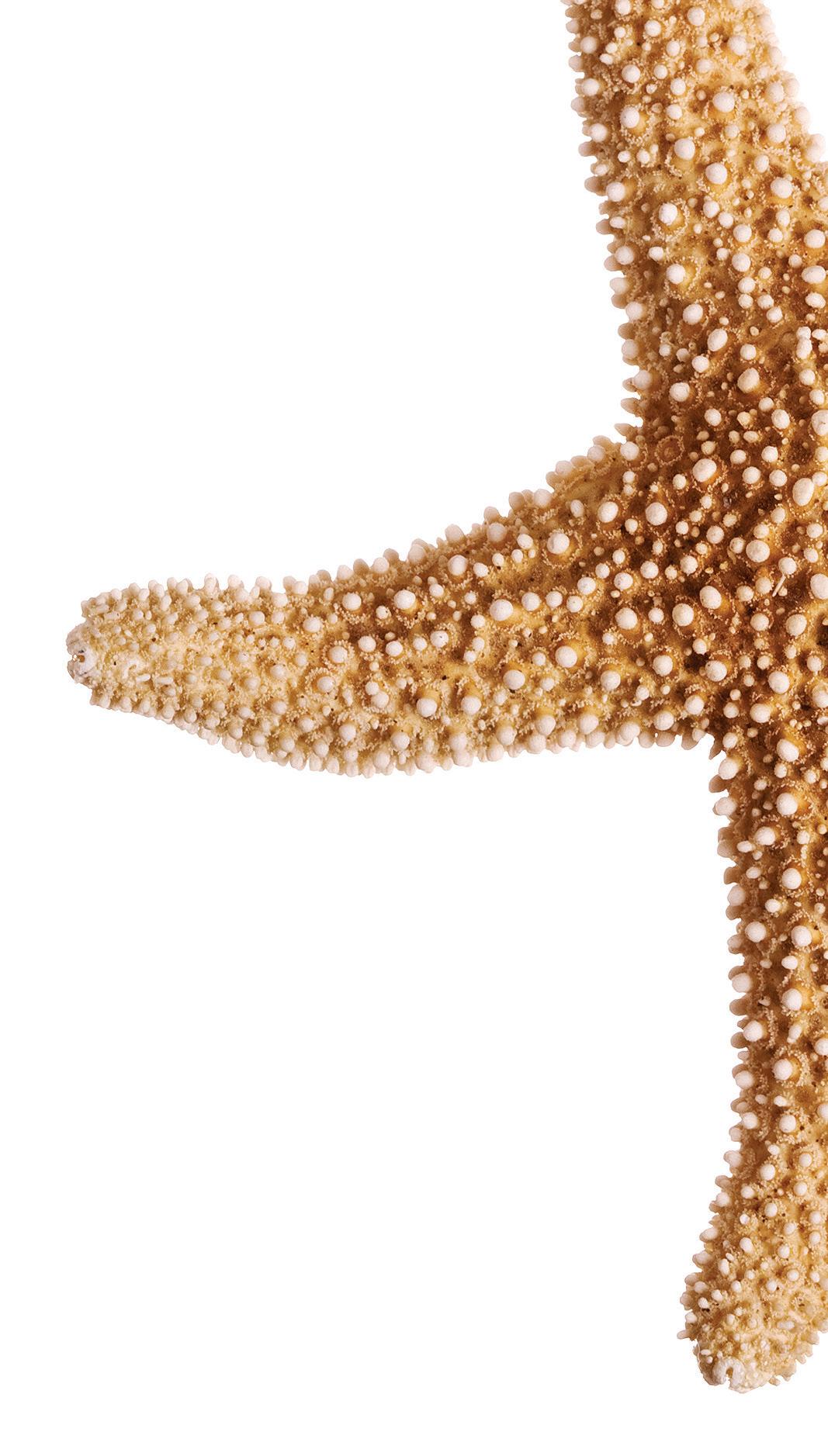
6 ScottishRiteNMJ.org
The Northern Light

but like the little boy in the story, they seek to make their difference on an individual level, knowing that it makes a difference for the collective good.
We must be ever mindful that what we do as Masons may not have an immediate impact on society as a whole, but it does impact individuals.
setting – was Brother Michael that he went on to become a Hauts Grades Academic.
Thursday Night at the Rite has just concluded its fifth season. This program, designed to get us through the dark days of COVID-19, has brought the lessons of the Rite into the

THE NORTHERN LIGHT A magazine of 32˚ Scottish Rite Freemasonry Spring 2024 | Vol. 55 | No. 1 SOVEREIGN GRAND COMMANDER Walter F. Wheeler, 33° EXECUTIVE EDITOR Linda R. Patch EDITOR PJ Roup, 33° CREATIVE DIRECTOR Rodney E. Boyce, 33° CONTENT MANAGER Joann Williams-Hoxha DIRECTOR OF DESIGN Matt Blaisdell, 32° COMMUNICATIONS COMMITTEE J. Brian McNaughton, 33°, Chairman Donald G. Duquette, 33° PJ Roup, 33° Richard J. Powell, 33° Donald M. Moran, 33° SUPREME COUNCIL, 33° Ancient Accepted Scottish Rite, Northern Masonic Jurisdiction, U.S.A. THE NORTHERN LIGHT (ISSN 1088-4416) is published quarterly in the Spring, Summer, Fall, and Winter by the Supreme Council, 33°, Ancient Accepted Scottish Rite, Northern Masonic Jurisdiction, U.S.A., as the official publication. Printed in U.S.A. Periodicals postage paid at Boston, MA, and at additional mailing offices. POSTMASTER Send address changes to The Northern Light PO Box 519, Lexington, MA 02420-0519 MAILING ADDRESS PO Box 519, Lexington, MA 02420-0519 EDITORIAL OFFICE 33 Marrett Road (Route 2A), Lexington, MA 02421 phone: 781-862-4410 email: editor@srnmj.org WEBSITE: www.ScottishRiteNMJ.org @TNLMagazine Copyright ©2024 by Trustees of the Supreme Council of the Ancient Accepted Scottish Rite of Freemasonry for the Northern Masonic Jurisdiction, U.S.A. FROM THE EDITOR’S DESK
ScottishRiteNMJ.org Spring 2024
Local Vermont Community Honors the Four Chaplains
by Kenneth Clay, 33˚ Deputy for New Hampshire
OnSaturday, February 3, 2024, an inaugural event was held at The Reverend George L. Fox Memorial Chapel in Gilman, Vermont. The purpose of this event was to honor Reverend Fox and three other chaplains lost during a tragic event 81 years ago to the day.
Scottish Rite Masons will know that our 23rd degree, Knight of Valor, depicts the heroic events of February 3, 1943. On that fateful night during World War II, the USAT Dorchester was torpedoed and sunk. Over 900 were on board, including four chaplains: Methodist minister, the Reverend George L. Fox; Reform Rabbi, Alexander D. Goode, Ph. D.; Catholic priest, Father John P. Washington; and Reformed Church in America minister, the Reverend Clark V. Poling.

The four chaplains sought to calm the men, organize an orderly evacuation of the ship, and help guide wounded men to safety. As life jackets were passed out to the men, the supply ran out before each man had one. The chaplains removed their own life jackets and gave them to others. They helped as many men as they could into lifeboats. Then, linked arms, and saying prayers and singing hymns, went down with the ship. In the coming days, only 230 of the 904 men aboard were rescued.
The chapel in Vermont was the final house of worship where the Reverend George L. Fox served before deploying. A few years ago, the chapel was on the real estate market. With many thanks to generous community members, military members, the Freemasons, and Scottish Rite Masons, the chapel was purchased by a non-profit agency and will be used to serve the local community as a lasting tribute to Reverend Fox.
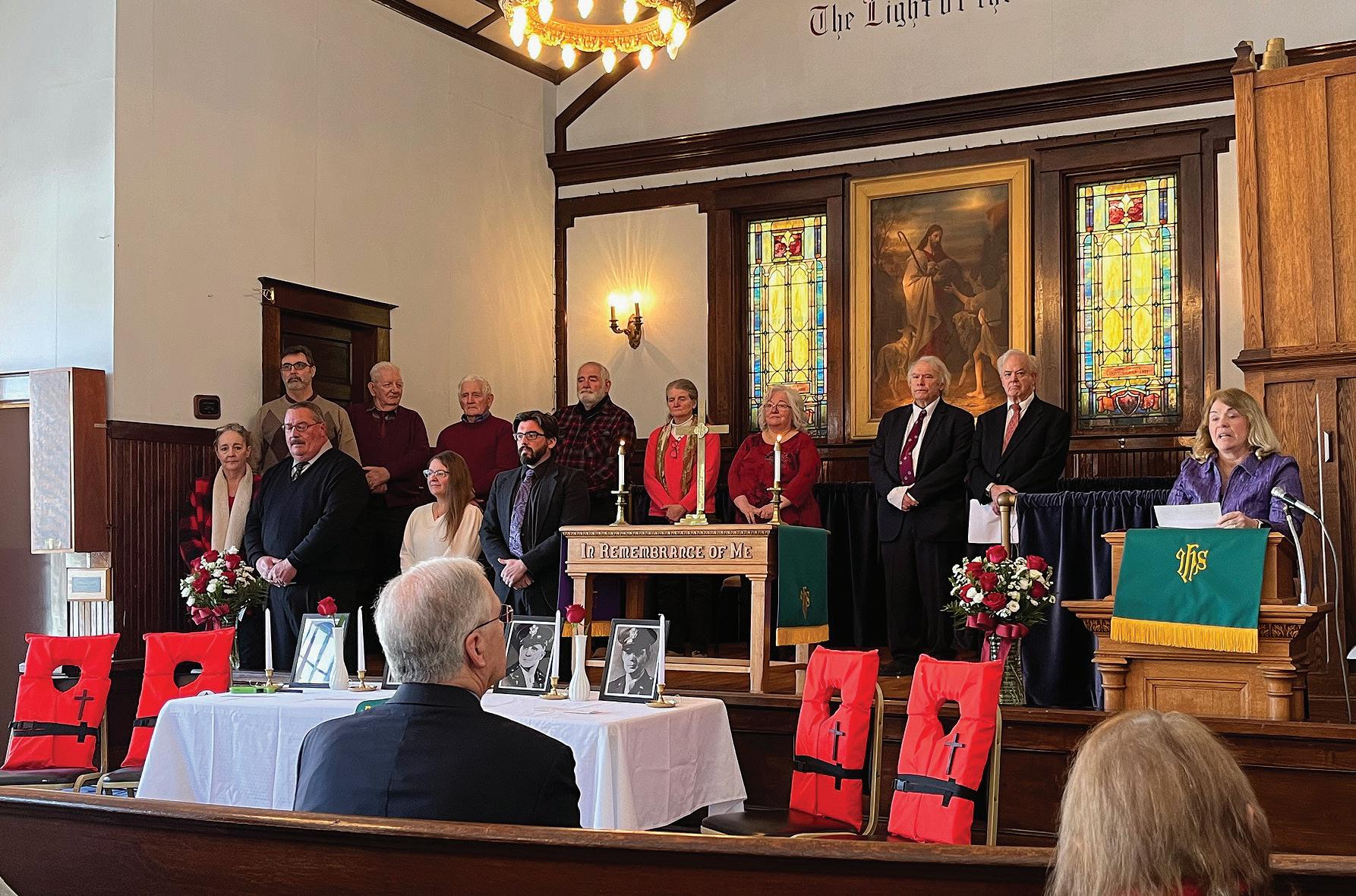
In Memoriam

Ill. Thurman C. Pace Jr., 33° 1924-2024
Ill. Thurman C. Pace Jr., 33°, an Active Emeritus member of this Supreme Council for the state of New Jersey, laid down his working tools on Sunday, January 21, 2024, just two days shy of his 100th birthday.
Raised a Master Mason at Lafayette Lodge No. 27 in Rahway, New Jersey, on March 16, 1959, thereafter, transferring to the Atlas Pythagoras Lodge No. 118 in Westfield, New Jersey. Served the Lodge as Chaplain in 1976, Jr. Warden in 1989, Sr. Warden in 1990 and Master in 1991. Exalted in Lafayette Chapter No. 26 of Rahway on May 4, 1961, serving as High Priest (1972) and Treasurer (1975). Became a Cryptic Mason in Adoniram Council No. 9 on June 6, 1962, where he held the office of Thrice Illustrious Master (1971) and Recorder (1972, 1973). Knighted a Knight Templar on November 27, 1961, in Trinity Commandery No. 17 in Plainfield, New Jersey where he held the office of Commander (1976) and Recorder (1969-1973). Held the office of Grand Commander in the Grand Commandery (1976), Assistant Grand Recorder (1977), Grand Recorder (19781984 and 1986-1991), Grand Treasurer (1991) and Northeastern Department Commander (1982- 1985).
The Northern Light 8 ScottishRiteNMJ.org.org
N
Thurman completed the degrees of the Scottish Rite in the Valley of Northern New Jersey on December 1, 1973, and served as the Chapter of Rose Croix’s Master of Ceremonies (1988-1989), Orator (1989-1991) and Jr. Warden in 1991. In Consistory, he served as the Standard Bearer (1989-1990) and Engineer and Seneschal (1990-1991). Coroneted a Sovereign Grand Inspector General, 33°, Honorary Member of the Supreme Council on September 30, 1987, in Boston and elected an Active Member in Indianapolis in September of 1991. He served as an Active Member of this Supreme Council until 1999.
Thurman’s service to Masonry, his country, and his community is vast. He was at the forefront of the official opening of the Scotch Plains Masonic Children’s Dyslexia Center in New Jersey. He was appointed an Honorary Member of the International Supreme Council, Order of DeMolay and received the DeMolay Medal of Appreciation; DeMolay Legion of Honor; A.M.D. Red Branch of Eri; Order of High Priesthood; Order of the Silver Trowel; Council of Thrice Illustrious Masters; Grand Representative of Alabama near New Jersey for Grand Chapter; and Grand Council and Grand Commandery. He was an Honorary Member of seven Grand York Rite Bodies, as well as the Valley of Southern New Jersey, A.A.S.R; Al Malaika Shrine Temple in Los Angeles; and Denver Court No. 138, R.O.J. in Colorado.
In 2023, he received the Daniel D. Tompkins Medal for his 50 years of service to the Scottish Rite and courageously serving his country in World War II for General Patton’s Third Army. His unit, along with many others, spearheaded Patton’s Army in the relief of the besieged 101st Airborne Division at the Battle of the Bulge. Read more about his military career in the Summer 2023 edition of The Northern Light (p. 9).
New Director of Scottish Rite Charities
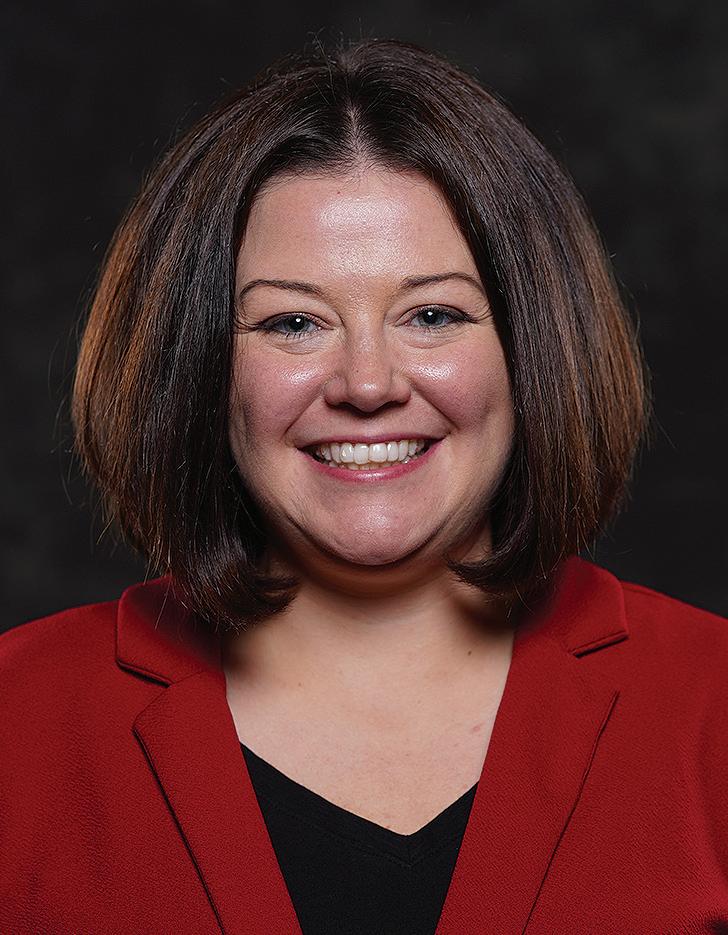
Supreme Council is pleased to announce the promotion of Bridget Steele to the position of Director of Charities. Bridget has worked in various roles since her career at Scottish Rite began in 2007. She currently oversees the department’s diverse workload, managing ongoing projects and new initiatives.
“To me, this role is all about personal connections: connecting with the people we are able to assist and connecting with donors who help make this important work possible,” she said.
In a former life, Bridget worked as a journalist for a Michigan newspaper and now loves to write compelling stories that highlight the impactful work of our Scottish Rite Charities.
“I like to say I have the best job in the world because I get to see firsthand the difference our charities make in the lives of others,” she said. “Just a few days ago, I had the privilege of speaking to a widow who broke down as she shared how the Grand Almoner’s Fund was a lifeline to her when she had nowhere else to turn. It’s stories like these that inspire me and serve as a reminder that our charities really do change lives.”
In addition to raising her own two daughters, she is a registered foster parent and enjoys volunteering at her church.
9 ScottishRiteNMJ.org Spring 2024 NEWS
Masters’ Chairs
In the early decades of the 1800s, Masonic ritualist Jeremy L. Cross noted that during the opening ceremony of the lodge, “…the Master is reminded of the dignity of character which he is to maintain…and the brethren of the reverence and respect due from them….” Since Cross’ time and before, Freemasons have turned their attention to procuring lodge room furnishings that support the work of the lodge, and in the case of seating for officers, underscore the Master’s authority within the lodge. The seat from which the Master presides has taken different forms over time, shaped by fashion, tradition, and the essential role of a lodge Master.
In 1797, Freemasons in Waterbury, Connecticut, received a charter to form Harmony Lodge No. 42. It is believed the lodge employed this locally made Windsor armchair as a seat for the newly installed lodge Master. This type of chair—characterized by turned spindles and legs fitted into a solid seat—was common in many households at the time. It may have originally been owned by a lodge member. (right)
The Brethren of Morning Star Lodge in Worcester, Massachusetts, chartered in 1793, procured this stylish and purpose-built armchair to accommodate the Master of their lodge. This chair, with an upholstered seat and a shield-shaped back decorated with carving and inlay, resembled
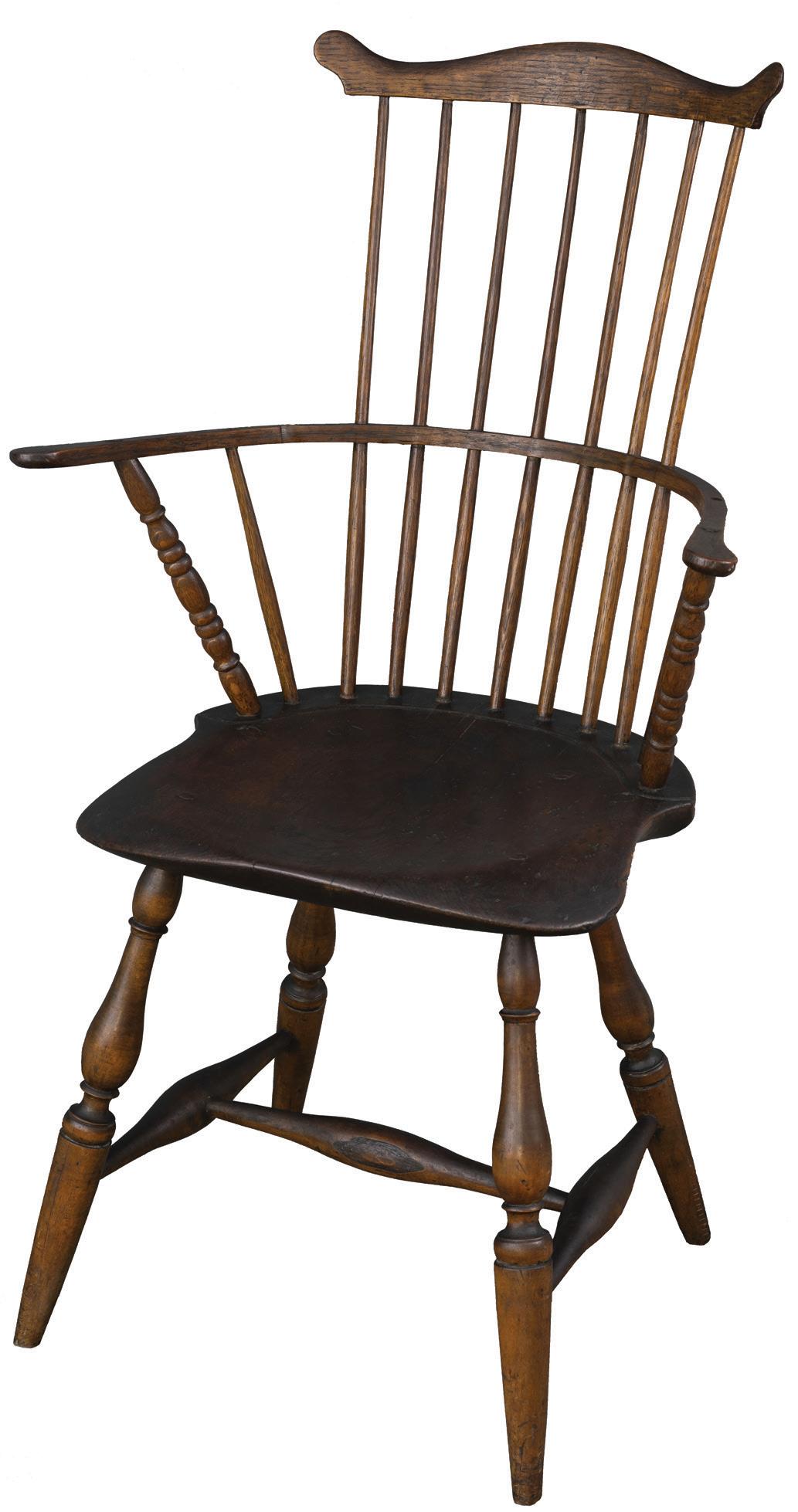
fashionable chairs produced in Boston in the 1790s. Unlike a chair used in a parlor or at a dining table, this chair’s back slats featured Masonic symbols detailed in gilt. The lodge may have purchased it around the time they started meeting at a new hall in the spring of 1793. (below)
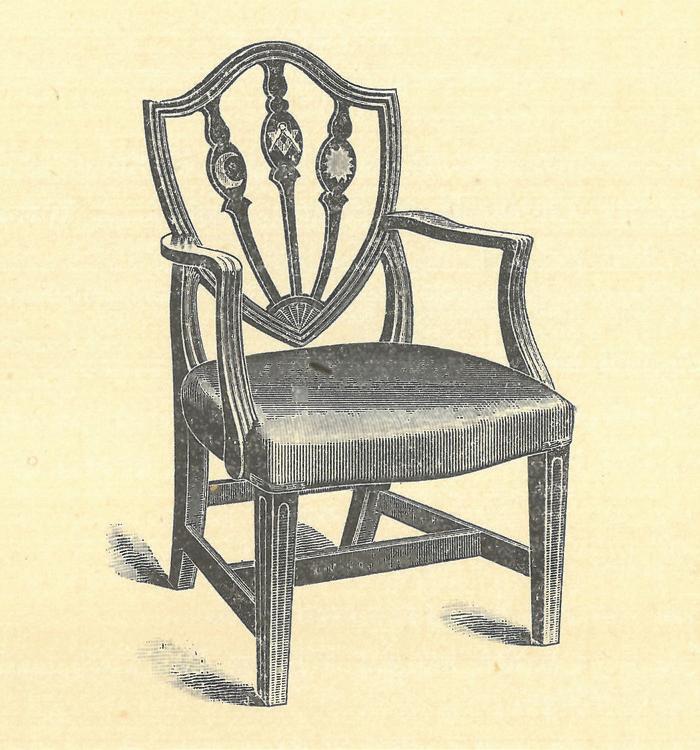
Attributed to furniture maker Henry Connelly, who worked in Newville, Pennsylvania, in the 1790s, this visually arresting chair is thought to have been used at Lodge No. 76. Area Freemasons established the lodge in 1798. The lodge’s first Junior Warden, charter member Archibald McCoy, has been credited with having given this chair to the Newville lodge, though what circumstance prompted him to make the gift is unknown. With a back formed of carved Masonic symbols—most related to Royal Arch Freemasonry—this chair was obviously intended for use in a lodge, mark lodge, or chapter. Its wide seat and overall height (just under five feet) would
C
The Northern Light 10 srmml.org
Hilary Anderson Stelling, Director of Collection and Exhibitions Scottish Rite Masonic Museum & Library
Chair used at Harmony Lodge No. 42, ca. 1790. Scottish Rite Masonic Museum & Library, Gift of Harmony Lodge No. 42, A.F & A. M, Waterbury, Connecticut, 91.043.
Photograph by Michael Cardinali.
Master’s Chair used at Morning Star Lodge, Worcester, Massachusetts, ca. 1793. From A Centennial History of Morning Star Lodge, A.F and A.M., A.D. 1793-A.D. 1893.
have commanded viewers’ attention and emphasized the authority of the presiding officer who occupied it. (below)
Also constructed on an impressive scale, this Master’s chair used at Swan Lodge No. 358 in New Mount Pleasant, Ohio, bears an inscription on the front stretcher declaring that
it was “Manufact’d by John Luker.” Luker painted the chair with dark colors, accented with bright red lines and symbols delineated in gold and silver metallic paint. One leg of the chair is inscribed “JHM Houston’s.”
John H. M. Houston served as the Master of Swan Lodge No. 358 from 1867 to 1873. Houston may have commissioned the chair in 1871 to furnish the lodge’s new meeting space. In creating the chair, Luker looked

to the past. The distinctive curving x-shaped legs were likely inspired by a type of folding seat used in Roman times called a curule chair, a seating form associated with authority. (below)

CULTURE 11 Spring 2024 ScottishRiteNMJ.org
Master's Chair, ca. 1798. Attributed to Henry Connelly (1770-1826), Newville, Pennsylvania. Special Acquisitions Fund, 88.43.
Master’s Chair, ca. 1870. John Luker, (b. 1838), Vinton County or Hocking County, Ohio. Gift of the Estate of Charles V. Hagler, 85.20.1.1.
Photograph by David Bohl.
MASTERS’ CHAIRS
In the decades after the Civil War, regalia manufacturers began offering their customers not only factory-made aprons, sashes, and uniforms but also mass-produced lodge furnishings. Pettibone Brothers of Cincinnati, Ohio, for example, presented 13 different models of “highly polished Walnut” chairs in Gothic and historic revival styles for Masonic lodges in a catalog the firm published around 1895. Pettibone sold each style of officer’s chairs in two heights: the tall chair for the Worshipful Master and shorter chairs intended for Senior and Junior Wardens. Interestingly, none of these styles featured Masonic symbols. Each chair was sold with a variety of upholstery options, including mohair damask (textile woven from goat wool) and silk plush (a textile similar to velvet). Models included “The Washington Chair,” the tallest available at six feet and nine inches high, and “The Autocrat Chair,” the most expensive—$72.00 if upholstered in “extra fine figured leather.” (below)
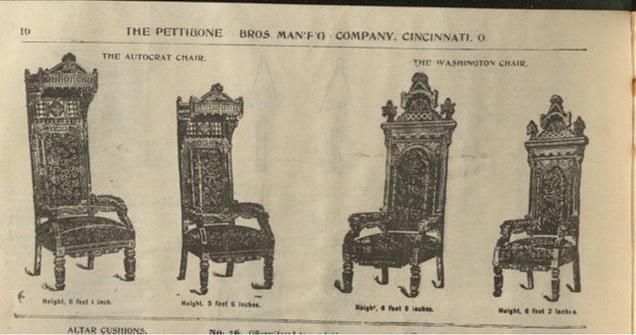
From Catalogue

Sometime around 1888, the members of the Masonic organizations that met at the newly constructed Academy of Music in Newburgh, New York, including Hudson River Lodge No. 607 and Newburgh Lodge No. 309,
decorated their meeting room with a rich variety of stenciled patterns on the walls and ceilings, an elaborate metal and glass chandelier, and a large set of officers’ furniture ornamented with carving. At meetings in this hall, the
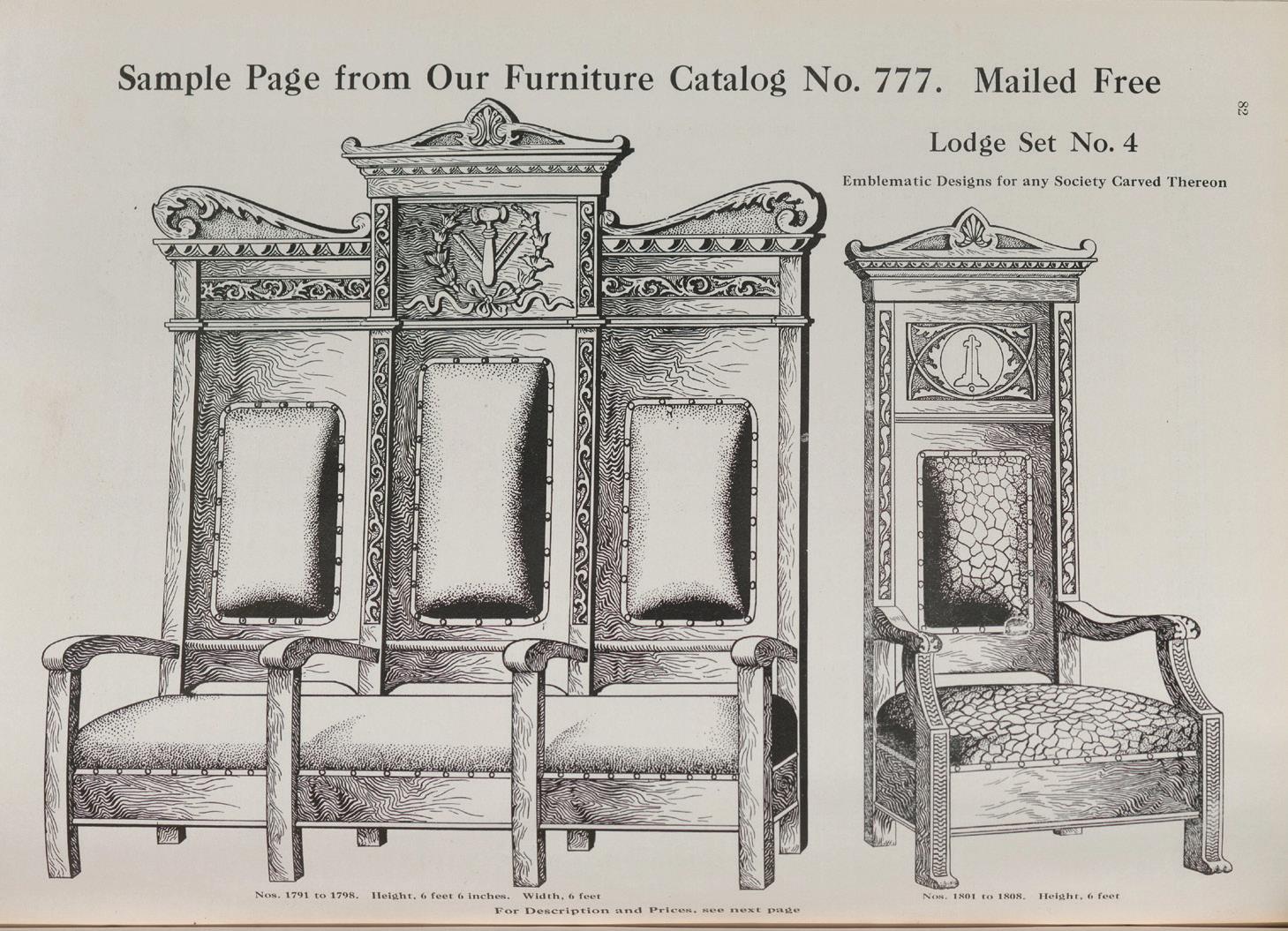
C The Northern Light 12 srmml.org
continued
No. 148 Masonic Lodge Supplies, Costumes and Paraphernalia, The Pettibone Brothers Mfg. Co., Cincinnati, Ohio, ca. 1895. Gift of Jacques Noel Jacobsen, Jr., Ihling Everard Company, and Supreme Council, 33°, Ancient Accepted Scottish Rite, Northern Masonic Jurisdiction, U.S.A., A1992/167/002.
From Catalogue No. 791 Masonic Blue Lodge Supplies, The Pettibone Brothers Mfg. Co., Cincinnati, Ohio, ca. 1915. Gift of Jacques Noel Jacobsen, Jr., Ihling Everard Company, and Supreme Council, 33°, Ancient Accepted Scottish Rite, Northern Masonic Jurisdiction, U.S.A., a1992/167/002.
Lodge Room, ca. 1888. A. Peck & Son, Newburgh, New York. Museum Purchase, 2014.066.1.
If you would like to learn more about the collections in the Scottish Rite Masonic Museum & Library, visit our online collections database at https://www.srmml.org/collections/. ?
presiding officer sat in the largest chair positioned at the center of the dais. The height and location of the chair focused attention on the lodge Master—the officer given the authority and trust to govern the lodge. (upper left)
Keeping up with changing fashions and the desire to offer their customers cost-efficient lodge furnishings, around 1915, the Pettibone Brothers advertised officers’ seating in the form of a bench with a high back. Called a “Triple Chair,” this furniture form was available in golden oak, walnut, or cherry, with the option of a spring seat and upholstery in plush, leather, damask, or Pantasote—a non-flammable, durable, and easy-to-clean imitation leather. Divided by armrests and ornamented by carvings on the back, this bench was sold with the option for purchasers to customize it with “Emblematic Designs for any Society.” (lower left)
Though sets of coordinating lodge furnishings were readily available, many lodges outfitted their meeting spaces with furniture not necessarily manufactured for Masonic use. In Mendocino, California, charter member Erik Jenson Albertson designed and constructed his lodge’s building between 1866 and his death in 1872. His work included carving the columns and entablature of Mendocino Lodge No. 179’s lodge room. Photos taken when the structure was documented by the Historic American Building Survey in 1960 show that lodge members used
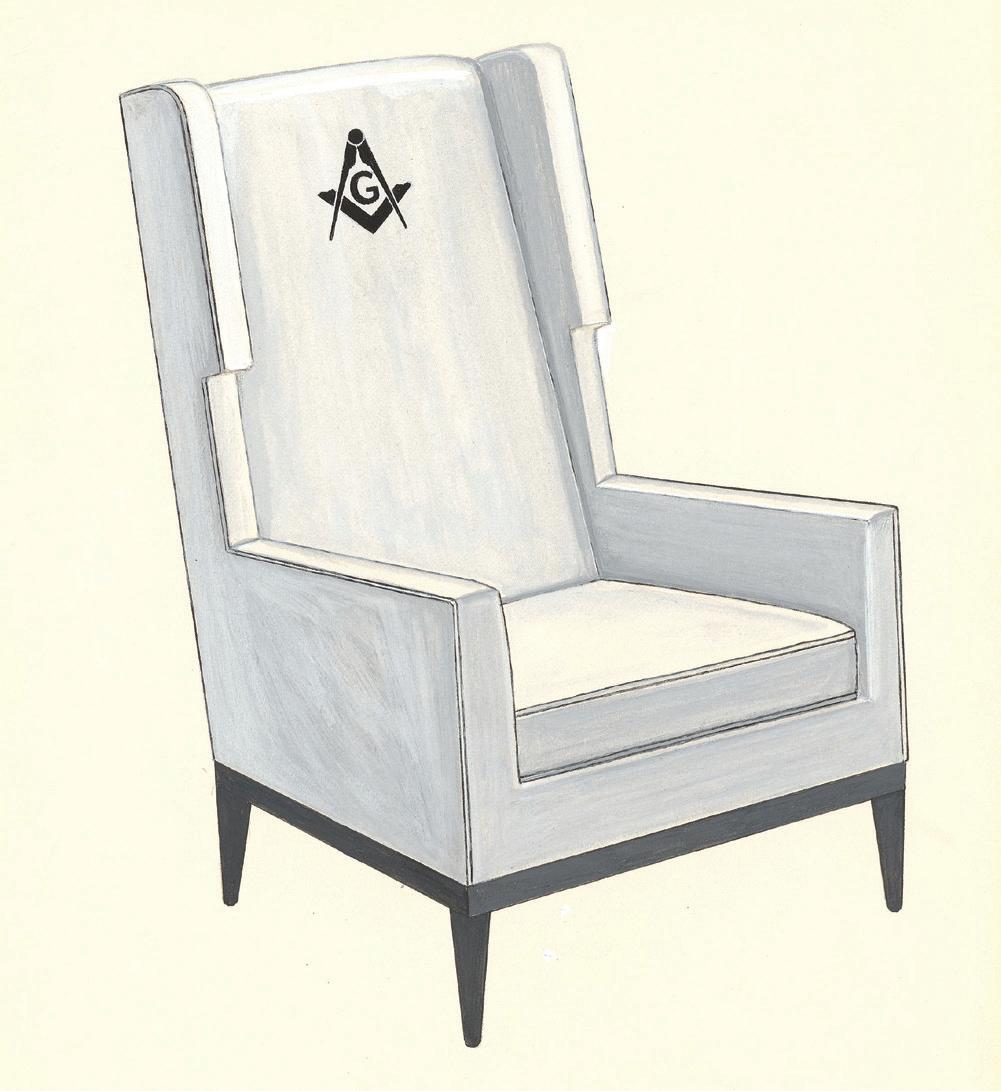
plain Arts and Crafts style armchairs for officers’ seating. These chairs provided a striking contrast against the backdrop of an exuberantly carved and painted lodge room. (below left)

An undated twentieth-century design from Ihling Brothers Everard Company shows a sleek upholstered wingback chair decorated with a square and compasses and the letter G. It is not known if this design was produced and sold to customers or what its intended purpose was—seating for a lounge in a Masonic building or a new take on a Master’s chair? With its restrained ornamentation and modern lines, this chair reminds us that lodge furnishings, though they play a role in sustaining traditions, have long reflected the tastes of the times in which they were created. (above)
CULTURE 13 Spring 2024 ScottishRiteNMJ.org
Interior, Masonic Temple, Mendocino, California, Jack E. Boucher, 1960. Library of Congress.
Chair Design, 1950-1975. Ihling Bros. Everard Co., Kalamazoo, Michigan. Gift of Ihling Bros. Everard Co., A1999.72b.
Lodge of St. Andrew 1768 Summons
by Jeffrey Croteau, Director , Van Gorden-Williams Library and Archives
He is perhaps best remembered as the messenger who brought word to his fellow colonists that the British Army had left Boston and were headed west toward Lexington and Concord, but Paul Revere (1734-1818) was much more than that. He was a talented silversmith and engraver, a political organizer, a forward-thinking entrepreneur, and a Freemason. This document from the Scottish Rite Masonic Museum & Library’s Van Gorden-Williams collection helps illustrate many of these roles. It is a lodge summons, a notice which was sent from the Lodge of St. Andrew in Boston to its members to inform them of an upcoming meeting.
Raised a Master Mason in 1761 in the Lodge of St. Andrew, Revere held a number of offices between 1762 and 1765: first Junior Deacon, then Junior Warden, and Senior Warden. From 1767 to 1769, Revere served as Secretary of the lodge. His duties included sending out notices summoning members to the lodge’s next meeting. This particular summons has many interesting connections to Revere.
The bottom right-hand corner of the lodge summons makes it clear that it was “Engrav’d, Printed, & Sold by Paul Revere. Boston.” Yet what makes this particular copy of the summons special is that it is also signed by Revere in his capacity as Secretary of the lodge. This summons is dated February 10,
1768, during the time that Revere held that office. The summons directs the member to a meeting at “Freemason’s Hall,” which is how the lodge referred to their meeting place – the famous Green Dragon Tavern – beginning in 1764.
This summons was produced quite early in Revere’s time as a Mason. In 1794, over 25 years after this summons was issued, Revere was elected Grand Master of the Grand Lodge of Massachusetts. During Revere’s three years in office as Grand Master, he chartered 23 new lodges, almost doubling the number of lodges in the state, which left a lasting mark on Freemasonry in Massachusetts.
If you’d like to take a closer look at this summons, visit the Van Gorden-Williams Library & Archives Digital Collections site: https://digitalvgw.omeka.net/ items/show/502.
?
Have questions? Drop us a line at library@srmml.org or give us a call at 781-457-4109.
The

C
14 srmml.org
Van Gorden-Williams Library & Archives is located in Lexington, Massachusetts, at the Scottish Rite Masonic Museum & Library and is open to the public.
Summons issued by the Lodge of St. Andrew, 1768. Museum Purchase with the assistance of the Lodge of St. Andrew and the Kane Lodge Foundation, MA 001.243.

CULTURE 15
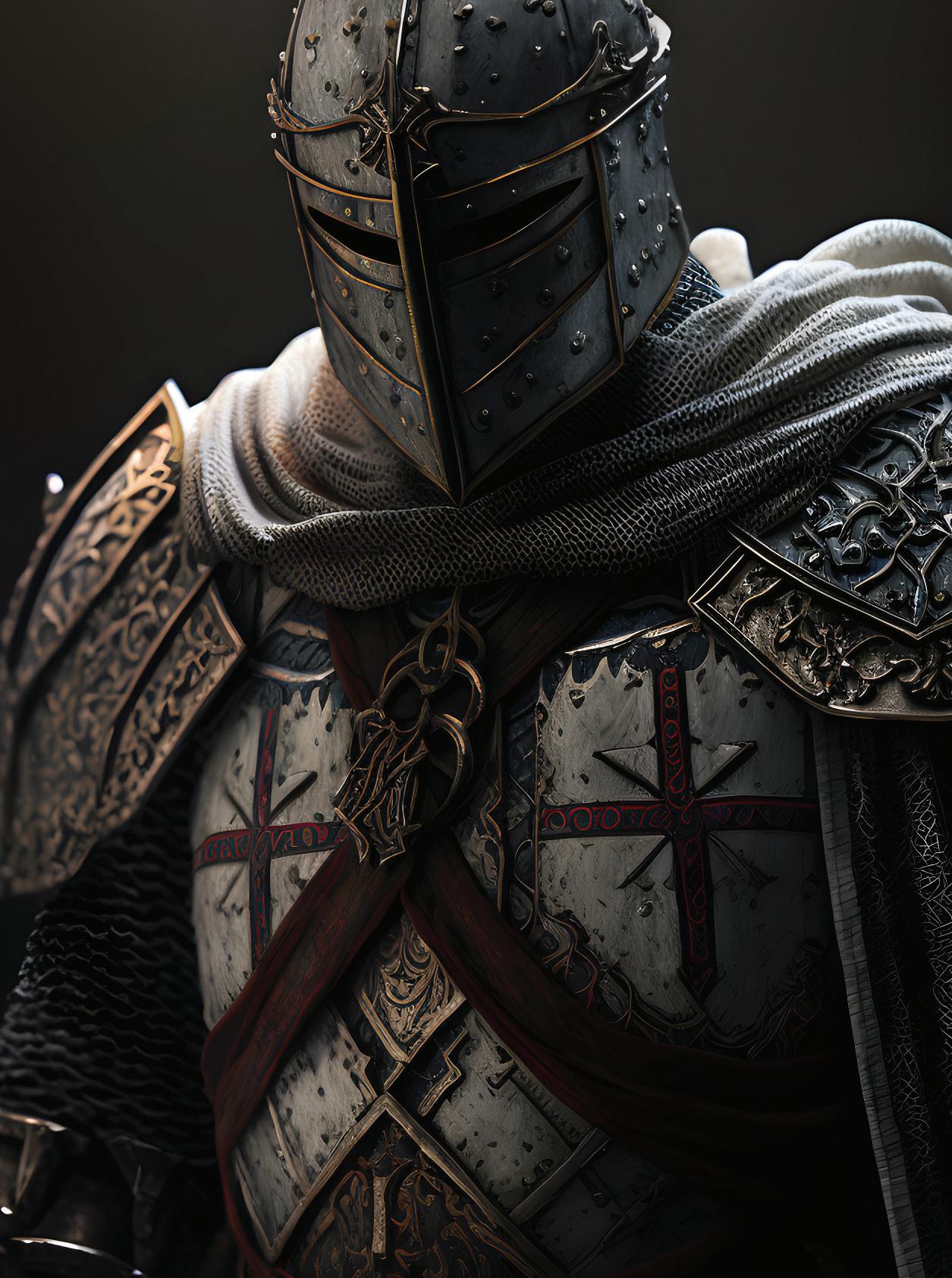
Knight of the HAUTS GRADES ACADEMY
E The Northern Light 16 ScottishRiteNMJ.org RoseCroix of H.R.D.M.
18TH DEGREE
 by Michael Glen Boyd, 32°, HGA Valley of Danville, Illinois
by Michael Glen Boyd, 32°, HGA Valley of Danville, Illinois
The 18th degree, Knight of the Rose Croix of H.R.D.M., is the second of the two Rose Croix degrees, both philosophical degrees presented without sectarian bias. This is an important point to make in any analysis of the 18th degree because the Core Value addressed in the allegory is that of Tolerance. A fundamental concept of this Core Value is “universality,” or the understanding that monotheistic traditions such as Christianity, Islam, and Judaism can experience fellowship together in the belief in the one God who is the Grand Architect of the Universe. The allegory presented in this degree also relies upon a symbol, the Book of Life, which represents the whole of mankind’s accomplishments as well as its failures. The observant participant of the 18th degree, then, is asked to consider the many times throughout history when intolerance has led to conflict, violence, or war. The 18th degree also calls the observant Mason to seek a new temple, “in the heart of man,” where we can seek a higher truth through the practice of religious tolerance.
As the ritual proceeds, the Neophyte learns an essential insight on his way to understanding the importance of tolerance. Perhaps this insight is best articulated by the Senior Warden, who states that “…material Temples can be destroyed.” The material temple referenced here most directly, of course, is Solomon’s temple, but it is the Junior Warden who reminds the Brethren that Solomon’s temple no longer exists and can no longer be a source of wisdom or truth. Embracing the philosophical nature of the degree, however, a Mason is also called to consider what other material temples can no longer lead us to truth. Perhaps these material temples are modern-day houses of worship such as churches, synagogues, mosques, or cathedrals. Perhaps the ritual calls upon the Mason to think in even more metaphorical terms as we consider other material temples associated with religious intolerance, such as attire,
adornment, outward displays of piety, or even dogmatic ritualistic practices.
His kingdom is not in the material temples of our
of material temples. If Masons seek wisdom and truth in the altars of Moloch, Ammon, Ashtoreth, or any of the many constructions of deity, they will surely be disappointed by the inevitable destruction of these worldly
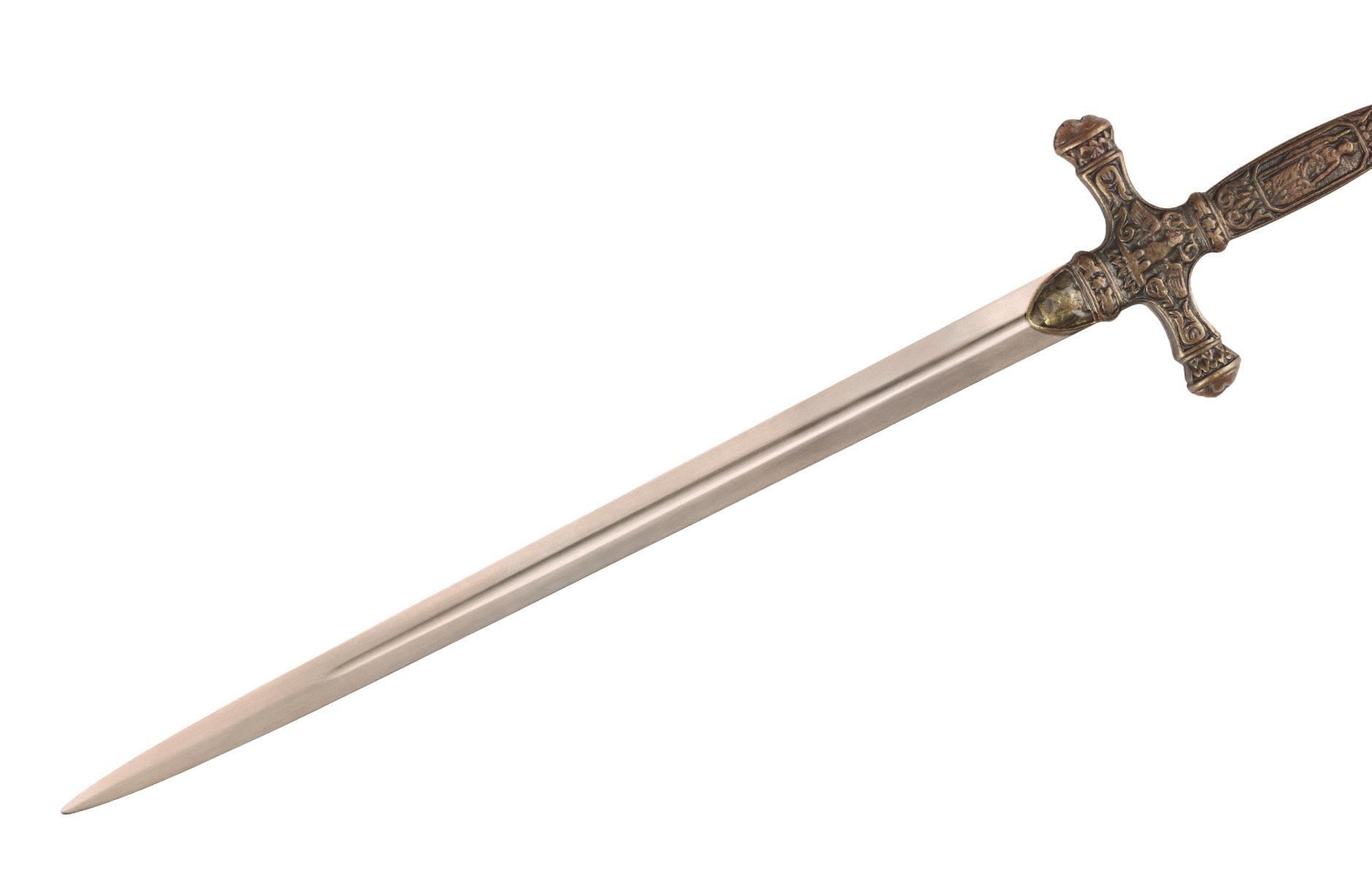
EDUCATION
Spring 2024
KNIGHT OF THE ROSE CROIX OF H.R.D.M. continued
HAUTS GRADES ACADEMY
but in men’s hearts. As such, men are called to adhere to a new law rather than the laws associated with temple worship or worship of material things. It’s a new law that requires us to “love one another,” and loving one another requires tolerance. At the conclusion of the degree, the Most Wise Master knights the Neophyte, saying that the 18th degree “summons you to fidelity to the New Law of Love, to respect for the honest convictions of others, to resistance to Tyranny, Intolerance, and Prejudice, and to loyalty to our
It’s a new law that requires us to “love one another,” and loving one another requires tolerance.
This call to action from the Most Wise Master is a key moment in the 18th degree, but it may be said that the most important line from this entire degree is the one spoken by the Orator in the Chamber of the Mystic Rose when he claims that, “All that is true and beautiful and good in our lives survives the death of the body. The house falls; the tenant lives on.” In fact, it could also be said that this one line encapsulates the entire wisdom of the 18th degree. When the Mason comes to understand that all material temples will be destroyed and that all material trappings of spiritual practices are worldly in nature, he also understands that the truest of temples lies in the heart of each man. When he comes to this realization, practicing religious tolerance is the obvious next step as we consider the failures of man’s unwillingness throughout history to live in fellowship with other

men who also believe in the Grand Architect of the Universe regardless of how they express this belief. This is the lesson that makes a Mason a Knight of the Rose Croix of Heredom.
All that is true and beautiful and good in our lives survives the death of the body.
To learn more about HGA and sign up for the waitlist, visit ScottishRiteNMJ.org/ hauts-grades-academy !
18 ScottishRiteNMJ.org E The Northern Light
EDUCATION


E The Northern Light 20 ScottishRiteNMJ.org
31ST DEGREE He Ain’t Heavy
 by PJ Roup 33°, Editor, Active for Pennsylvania Member Committee on Ritualistic Matters
by PJ Roup 33°, Editor, Active for Pennsylvania Member Committee on Ritualistic Matters
The 31st degree, My Brother’s Keeper, is one of the newer degrees in the Northern Masonic Jurisdiction. In 2014, in answer to the concerns of the membership, the Ritual Committee combined the 31st degree, Knight Kadosh, and the 32nd degree, Sublime Prince of the Royal Secret, to form a much more memorable and climactic culmination to the Scottish Rite degree experience. The Ritualistic Matters committee had no interest in reviving an older version of the Kadosh degree, choosing instead to fill the vacancy in the 31st with a completely new ritual using characters recognizable to all Scottish Rite Masons.
Written by Committee member, Ill. C. DeForrest Trexler, 33°, My Brother’s Keeper is set in a renowned Masonic meeting place, the Green Dragon Tavern. The degree begins with a brief prologue which recounts the Old Testament story of Cain and Abel, where Cain asks the Lord, “Am I my brother’s keeper?” It also introduces several real-life Revolutionary war heroes: Dr. Joseph Warren, Thomas Dawes, and none other than Paul Revere.
We meet an aged Paul Revere examining some papers in an empty Green Dragon Tavern. Brother Revere begins talking to the audience as if they are a character who has just entered the tavern. This dramatic device, often referred to as breaking the fourth wall, had been previously used by the narrator in the 19th degree, Brother of the Trail, and is also employed effectively in the opening of the 4th degree, Builder, where our modern-day narrator transforms into a workman at the building of Solomon’s temple.
By talking directly to the audience members, there seems to be a different level of engagement. While it’s not quite the same engagement that we may feel in the Craft degrees, observers definitely feel drawn into the action in a way that traditional degree formats do not provide.
In this effective opening scene, Brother Revere regales us with tales from his life and his exploits during the war. Becoming more introspective, he talks a little of his time as a Freemason, saying to the audience, “Oh yes, we have
EDUCATION
21 Spring 2024 ScottishRiteNMJ.org
He Ain't Heavy

satisfied each other, you and I, that we both are Masons, that is, we are, or have been, members of a Masonic lodge. But are we brothers? We would like to think so. We should be so. We find it easy to identify a stranger as a fellow Mason. But as a brother? Just who is our brother?”
He then tells a story, shown as a flashback, about an injured man who is brought to the Green Dragon on the night of a lodge meeting. Lest I spoil the entire story, I will simply observe that story is an effective retelling of the biblical parable of the Good Samaritan.
So, what does it mean to be a Good Samaritan today? Often, our news is filled with videos of horrific incidents of bullying, violence, and destruction. Many times, those incidents are captured by bystanders on their smartphones. I often wonder why those holding the phones don’t do more to stop the problem. To be certain, there are times where it wouldn’t do any good – the danger may be too great, or the crowd too large. I cannot help but wonder, though, how many of the more minor incidents could have been prevented if onlookers tried to bring about peace rather than record the confrontation in the hopes of “going viral.”
Being a good Samaritan isn’t always about rescuing the injured man on the side of the road, stopping the bully, or calming the crowd. It can happen when you simply get involved in the lives of others. That’s not always an easy thing – intertwining yourself with another. Making yourself vulnerable enough to stoop to the aid of another can be intimidating. Sometimes they don’t want the help. Sometimes they don’t even realize that they need the help.
Like it or not, we are our Brothers’ keepers. The burden of others is ours to bear or share as the situation dictates. When we can help as individuals, we must. When we cannot do it alone, we need to ask others to assist us.
In our degree, Revere wonders just who is our Brother? Quite simply, everyone is. We have never been an organization to help only our
The road is long With many a winding turn That leads us to who knows where? Who knows where?
But I 'm strong Strong enough to carry him He ain't heavy, he's my brother.
But we are called, as Masons, to serve others. Part of the allure of Freemasonry is its unapologetic charity. We and our sister organizations have given hundreds of millions of dollars to try and ease the paths of those around us. We do it because it is right, not because it is easy. Practicing the Core Value of Integrity leads us neatly to the practice of the Core Value of Service to Humanity.
In 1969, Bobby Scott and Bob Russell wrote these lyrics to a song made famous by The Hollies (see inset text). I apologize in advance, because I know you’ll be singing it all day.
own. Every kindness begets another kindness. It is our chosen lot to be a part of that every chance we get. The gestures do not need to be grandiose. They just need to come from the heart. Raking leaves, shoveling a driveway, delivering groceries to a homebound neighbor take a little effort but can mean so much to the person you help. Volunteering at a soup kitchen, shelter, or other communityfocused event can lift people up.
Big or small, these are acts of a modern day good Samaritan. This is what it means to be our Brother’s keeper.
E The Northern Light 22 ScottishRiteNMJ.org
continued EDUCATION
Masonic Presidential insPirations
The Scottish Rite Journal has recently covered U.S. presidents who were Masons, including a book review of Br. B. Chris Ruli’s The White House and the Freemasons. The appraisal of Dr. S. Brent Morris, 33º, G.C., lauds the book’s “meticulous documentation,” which sets the book apart from many other works on this theme. In the same issue, Br. Ruli, 32º, KCCH, presents a brief history of the Supreme Council Southern Jurisdiction’s White House visitations, including during the presidencies of Dwight Eisenhower, John F. Kennedy, and Ronald Reagan (all non-Masons).
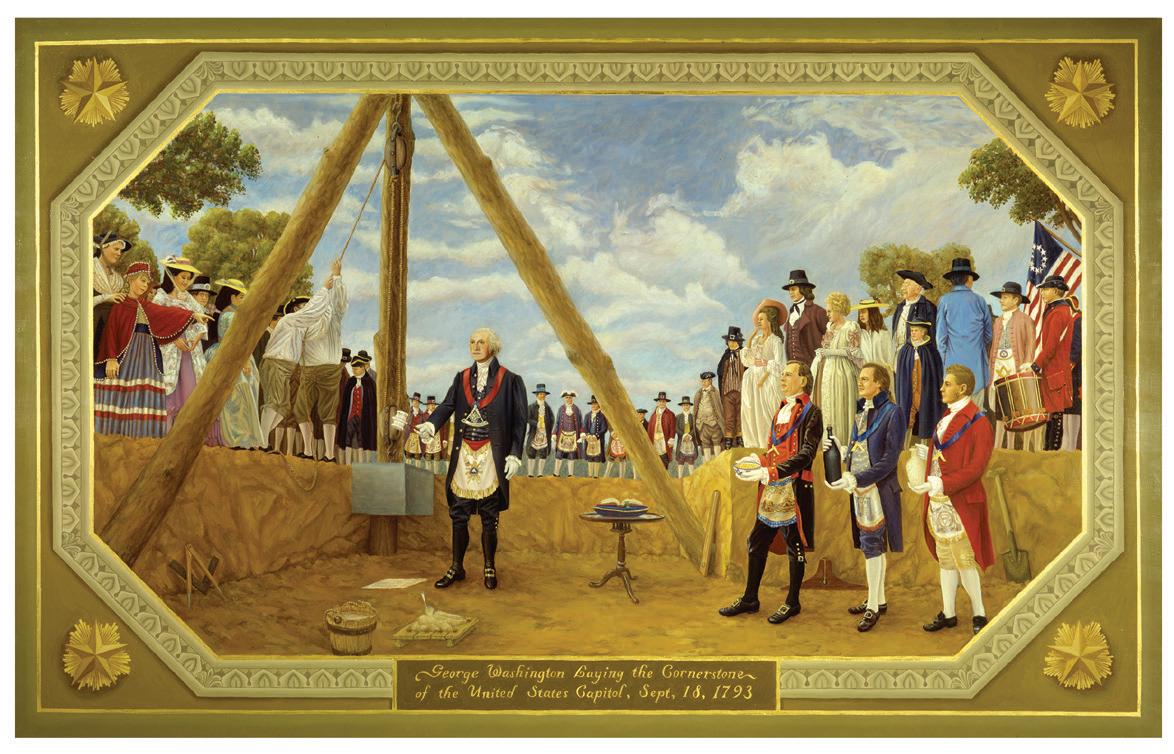
When Freemason George Washington laid the foundation stone for the Capitol Building in 1793, America set the stage for other stones to be torn down 200 years later—the stones
Br. James A. Marples, 32º, informs us of the complications in honoring President Franklin D. Roosevelt with the Thirty-third Degree, as “several active members of the [NMJ] Supreme Council felt that the President had become a lightning-rod due to his then-controversial ‘New Deal’ domestic policies” and were thus reluctant to proceed. Southern Jurisdiction SGC James Cowles, 33º, declined to approve the honor outside FDR’s home Northern Masonic Jurisdiction, and thus Br. Roosevelt never received the Thirty-third Degree.
The Journal recently took the unusual tack of covering the most famous Masonic president, Br. George Washington, from international perspectives. Ill. Alexander Ludwig, 33º, SGC of Germany, writes:
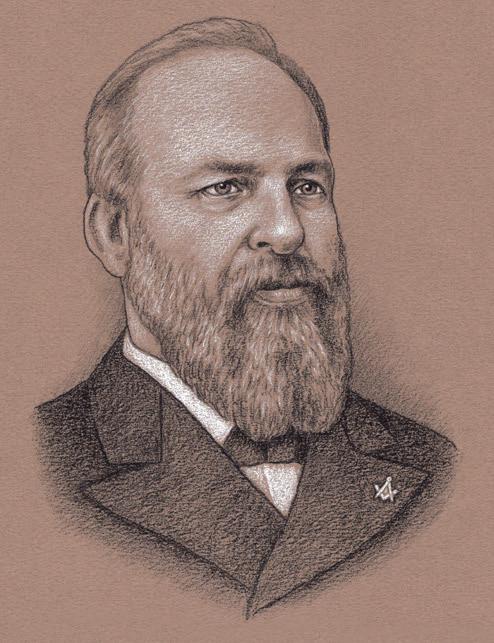
of the Berlin Wall. Never was [America’s] message of freedom stronger than at that moment.
London-based writer Jonathan R. Corbett tells us:
In London’s Trafalgar Square, honoring one of Britain’s greatest victories, there stands an ardent reminder of one of its greatest defeats, for here the statue of George Washington […] leader of the American War of Independence, proudly stands upon a foundation of Virginia soil. […] Tradition has it that Washington once promised never to set foot on English soil, and thus earth from Virginia was brought to England and placed below the pedestal of his statue.
Chips from the Quarry featured “Lesser-known Masonic Presidents,” including Br. James Polk (who laid the Washington Monument and Smithsonian Institute cornerstones), Br. James Garfield (who devised his own proof of the Pythagorean Theorem so beloved by Masons), Br. James Buchanan (who participated in the only debate on Anti-Masonry in the Capitol chamber), and Br. William Taft (the first president to be made a “Mason at sight”).
To read more on the interesting lives of American presidents who were Masons, please check out our Jan./Feb. 2024 issue, available online at https:scottishrite.org, under the “Education & Media” menu.
—Mark Dreisonstok, 33º, Managing Editor, Scottish Rite Journal
John Melius, 33°, George Washington Laying the Cornerstone to the U.S. Capitol Building. Oil on canvas. George Washington Memorial Banquet Hall, House of the Temple, Washington, D.C.
Travis Simpkins, 33°, President James Garfield, Chips from the Quarry.
23 Spring 2024 ScottishRiteNMJ.org

The Northern Light 24 ScottishRiteNMJ.org
by Michael Glen Boyd, 32˚, HGA Valley of Danville
Journey On[line], Brethren
It was early 2019 when my wife shared with me a social media post announcing that the lodge in my hometown of Manteno was hosting something called Rite on the Road. She knew I was interested in the Scottish Rite, of course, but I also think she knew I needed more engagement with Masonry.

Still, I was hesitant to commit. I had already given the Scottish Rite some consideration, but the prospect of traveling regularly to the closest Valley of Danville, Illinois, was a concern for me. From my home, the lodge in Danville is a full two-hour drive, and that’s just enough of a barrier to my regular attendance that I didn’t think I could get deeply involved enough in the Valley, build strong relationships with the Brothers there, or even experience enough ritual to learn the moral instruction I craved.
I’m not sure how I made the final decision to show up at Manteno Lodge that Saturday morning, but I did. The fellowship and Brotherhood were wonderful, and witnessing the 4th degree was illuminating. As I left the lodge that day, I carried with me my passport, a wealth of information about how to get more involved in the Scottish Rite, and most importantly, more light in Masonry. Our 4th degree, Builder, is an inspiring degree. I was
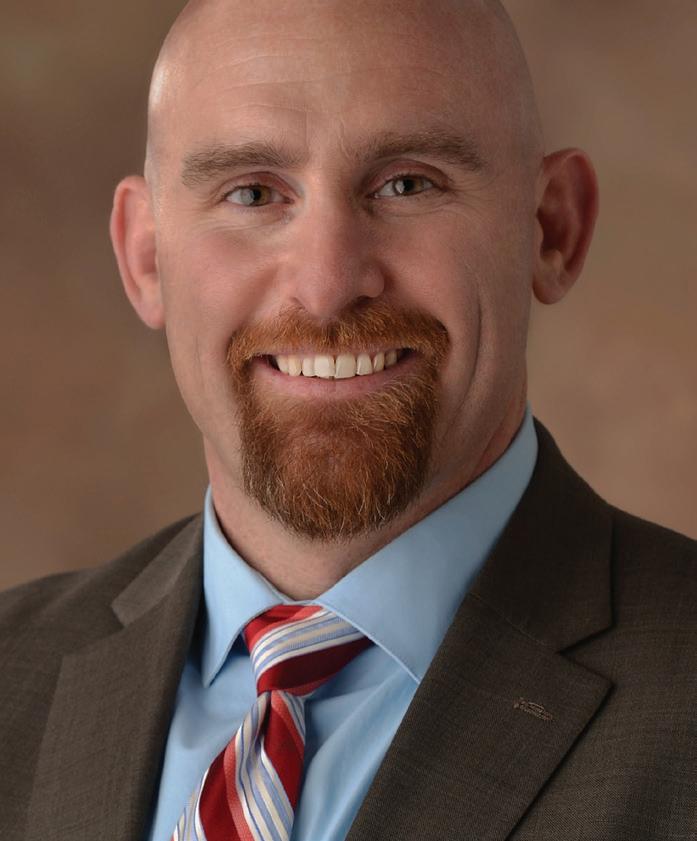
glad that I’d participated. I was also pretty sure that my introduction to Scottish Rite Masonry had most likely reached its conclusion as well. Danville was just too far away.
What happened next would change my relationship with Freemasonry forever. No, I’m not referring to a global pandemic, although that unfortunate event may have been a factor in the development of
what would show me new light in Masonry and open a path to further wisdom and enlightenment. If you are mentally tracking the chronology of my story on a calendar, you’ve already noted that I received my 4th degree prior to the COVID-19 pandemic which would change so much about how we, as Brethren, practice our Craft. Just a year after I received the 4th degree, we all found ourselves isolated and confused. We all struggled to seek fellowship and practice rituals when we were feeling the pressure to socially distance.
“From my home, the lodge in Danville is a full two-hour drive.”
That’s why Thursday Night at the Rite appealed to me so strongly. The promise to connect with Masonry’s ritual and allegory was a North Star in a period of darkness.
25 Spring 2024 ScottishRiteNMJ.org FEATURE
Michael Glen Boyd
JOURNEY ON[LINE], BRETHREN continued
When I first saw the notice about an online option to connect with the degrees, I recalled the early days of online education. I was an English professor when community colleges across the nation adopted and expanded online offerings. Educators had always experimented with teaching online as far back as the early days of the internet; however, the late 1990s saw online education advance dramatically. New software became available, allowing for efficient and effective communication, file-sharing, and active collaboration between students and faculty. It was an exciting time in higher education.
However, so many of us who leaped at the chance to be a part of this innovative step forward for college education felt pressure from our more traditional colleagues. Despite the effectiveness of the technology we were using and despite the proven success and positive learning outcomes associated with online education, there remained professors,
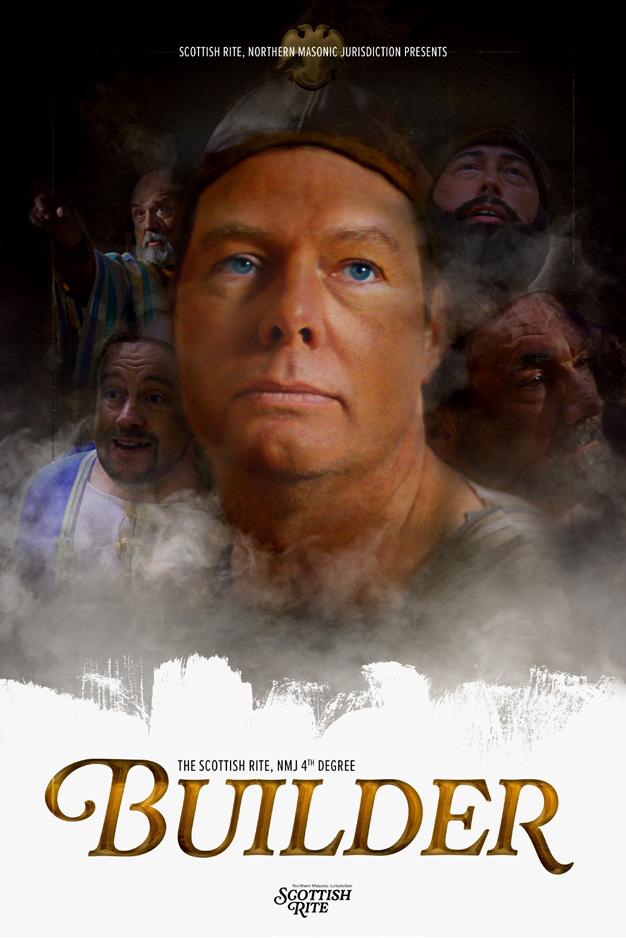
administrators, and even students who felt strongly that true learning could only happen face-to-face, inside a classroom, or in a lab. I can recall active campaigns from my colleagues to limit the growth of online options and to disparage online teaching as somehow less real, less rich, and less effective. Time has proven these critics wrong.
“There’s no substitute for the thrilling sensory experience of witnessing a live performance, but there’s also no substitute for enhancing our Fraternity by making it more accessible and available to our Brethren.”
Online education has been shown to be wildly successful in terms of maintaining academic rigor and delivering quality outcomes, but the most exciting impact has been increased access to college courses. Attending college on a campus and strictly on the schedule of that college’s face-to-face classes is a barrier to potential students whose lives are complex and filled with obligations. The rigid structure of college offerings was a problem, and online education changed the very
nature of how potential students could interact with a college, enroll in its programs, and complete valuable degrees. So many working adults, single parents, or students living in rural areas are now able to complete college degrees, because online programs have eliminated barriers to their success.
Of course, there are still proponents and detractors of online education who find it necessary to compare and contrast online with face-to-face education, but most of us in higher education have moved on. There’s no need to compare and contrast; rather, both approaches work. Both approaches are necessary to meet the needs of today’s college students.
Likewise, there’s no need for Masons to compare witnessing our degrees performed live in a lodge and viewing them on a Thursday evening in front of a computer. Both approaches work. Both approaches are necessary to meet the needs of today’s
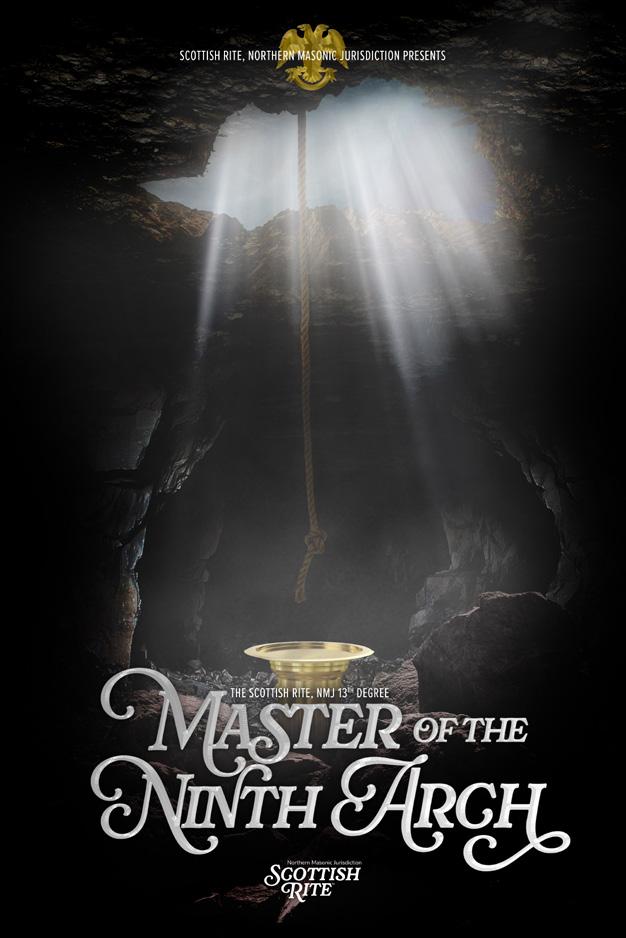
The Northern Light 26 ScottishRiteNMJ.org
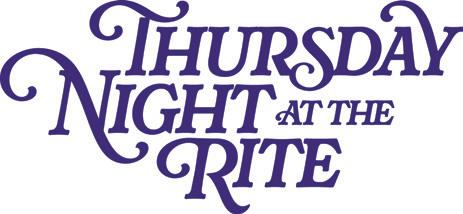

Freemasons. There’s no substitute for the thrilling sensory experience of witnessing a live performance, but there’s also no substitute for enhancing our Fraternity by making it more accessible and available to our Brethren.
Thursday Night at the Rite opened a door for me; it gave me access to the moral instruction of the Scottish Rite degrees. But that’s only the beginning of my story. Because I was so impacted by watching our degrees on Thursday evenings, I chose to enroll in the Hauts Grades Academy. The academy gave me even greater access to moral instruction, and I dove in. Completing Hauts Grades requires Brethren to explore the rich history of each degree, read them slowly and thoughtfully, capture insights and reflections in writing, and even create new scholarship. Like Thursday Night at the Rite, Hauts Grades provided another pathway for me to seek
wisdom and enlightenment from our degrees.
”That’s why Thursday Night at the Rite appealed to me so strongly.”
As I prepared to write this article, I took the opportunity to read through the reflective essays I wrote during my time in Hauts Grades. It was this short passage that reminded me how impactful it was for me to study our degrees in silent reflection and in solitude:
As I begin this reflection on the 13th degree, Master of the Ninth Arch, it is nearly two full years into the COVID-19 pandemic which has changed so much in our lives. At the onset of the pandemic, so many elements of our society simply shut down in the face of the challenges we were presented

by this virus and its impact. While we may never get back to “normal,” we’ve found ways to get back to the work we must do both personally and professionally. Overcoming the many challenges associated with the COVID-19 pandemic hasn’t been easy, and some of the hardest work in the recovery may yet lie ahead of us. In the coming months and years, our society will need leaders who are prepared to press onward toward Perfection, who are willing to continue carrying out daily duties and responsibilities, who exhibit courage and determination in the most challenging of environments. This is the moral instruction the 13th degree provides.
Providing access to the moral instruction imparted in our Scottish Rite degrees holds the potential for us to dive deeper into the truths they illuminate for us.
My professional role as President and CEO of Kankakee Community College demands a great deal of my time and energy. I’m also a husband and a father trying my best to live in alignment with the tenets we learn in the 4th degree. I know that someday in my future I’ll have greater flexibility to make that long journey to visit the closest Valley on a regular basis. For now, however, I’m thankful that the Northern Masonic Jurisdiction has made the lessons, allegory, and ritual of the Scottish Rite available and accessible to me as I “Journey On[line].”
27 Spring 2024 ScottishRiteNMJ.org FEATURE
Valley of Danville, Illinois
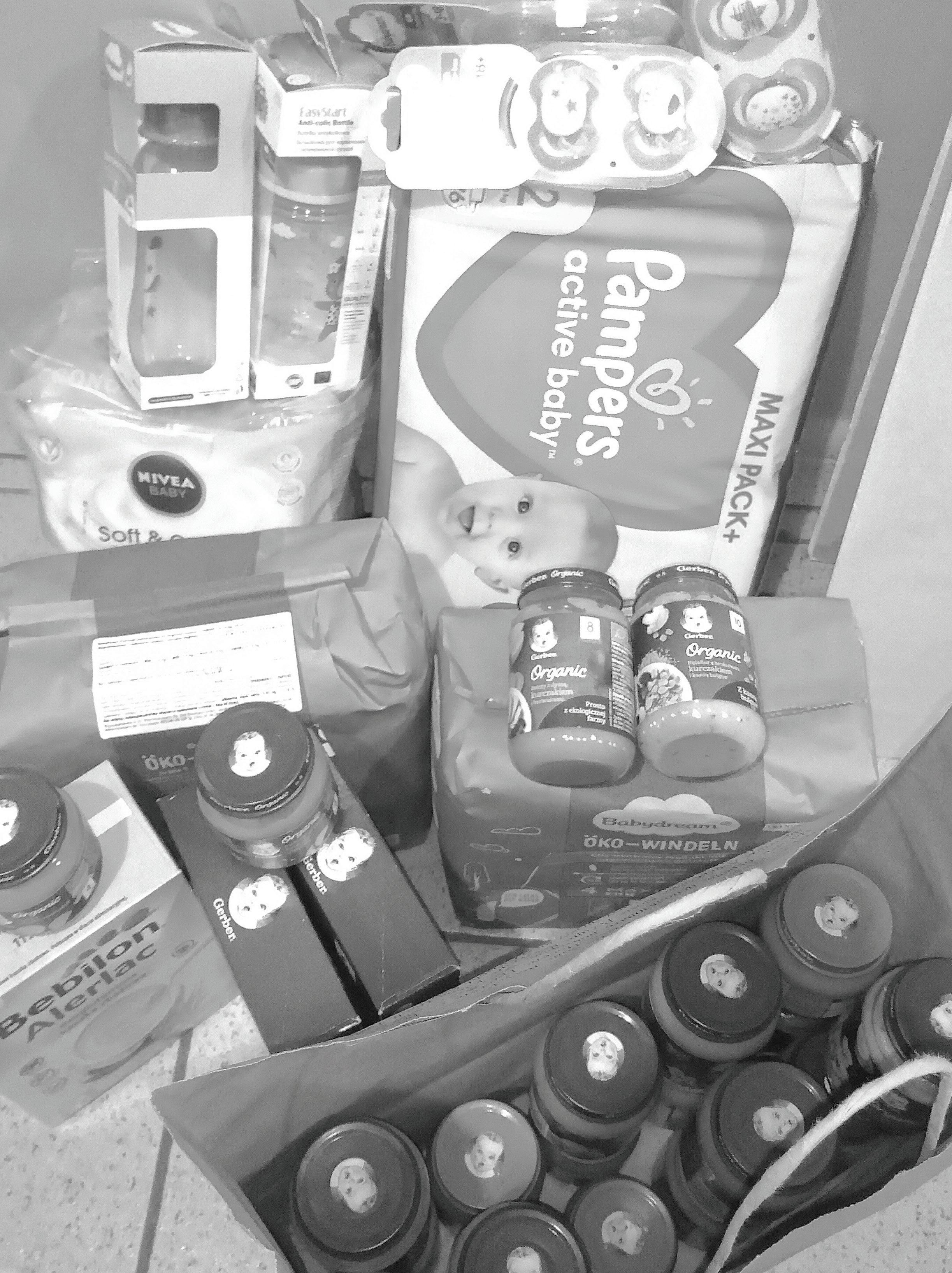
BROTHER
MASONIC HELPING UKRAINIAN REFUGEES
BY BILL SCHRANK, 32° & TANNER SCHRANK, 32°
The Northern Light 28 ScottishRiteNMJ.org
One of the first things we are taught as Masons is that a key tenet of Freemasonry is helping others less fortunate than ourselves. The following article exemplifies this tenet. I would like to relay the details of my son, Dr. Tanner Schrank, and his wife, Andrea Duarte's amazing selfless assistance to Ukrainian refugees in Poland since the war started in February of 2022. Tanner and Andrea have resided in Kraków, Poland for eight years. However, Tanner has been a member of the Valley of Madison Scottish Rite since March 2021.
Tanner was raised a Master Mason in 2008. He received his bachelor’s degree from UWMadison in 2013. Eventually, Tanner and Andrea moved to Kraków, Poland so Tanner could pursue a medical degree and Andrea could continue teaching. In 2019, he graduated from Jagiellonian University Medical College with his MD. Tanner and Andrea greatly enjoy living in Kraków and with their penchant for learning languages and traveling, they have now visited every country in Europe.
On February 24, 2022, Russia invaded Ukraine. Ukraine and Poland share a common border. Kraków, where Tanner and Andrea live, is only about 150 miles from the Ukrainian border. As Russia advanced, many Ukrainian women and children fled west to Poland, specifically to Krakow. This immense influx of new inhabitants put a tremendous strain on all the resources of Kraków, leaving many without food, shelter, medical care, or just the basic essentials. Understanding this need and feeling a desire to help, Tanner and Andrea set out to do what they could.
I will let Tanner’s own words describe their efforts for fear I would not do them justice:
Putin invaded Ukraine on February 24, 2022, which was actually a cultural holiday in Poland: Tlusty Czwartek or Fat Thursday. In normal times, this is a frivolous little holiday spent waiting in long lines for a fresh, hot paczek –traditional jelly-filled doughnuts. But instead of stuffing our faces, we were facing war in a neighboring country. Now, there were long lines at the border, at the train station, and at the refugee centers. First, I remember there was an overwhelming feeling of helplessness. We donated a few things we had lying around the house that we thought might be useful: sleeping bags, cloth tote bags, and an Americansized 1000-pill bottle of ibuprofen, which invoked wide-eyed wonder in the man at the collection center. In the European Union, ibuprofen is rarely sold in packages exceeding 24 tablets.
But then, something amazing happened. It is something, admittedly, that I hope I never have to experience again, because it is harrowing but
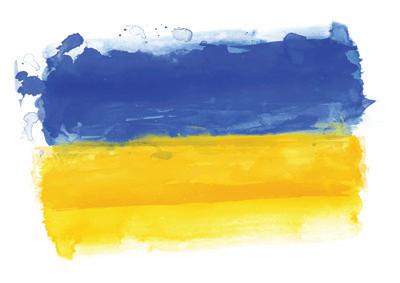

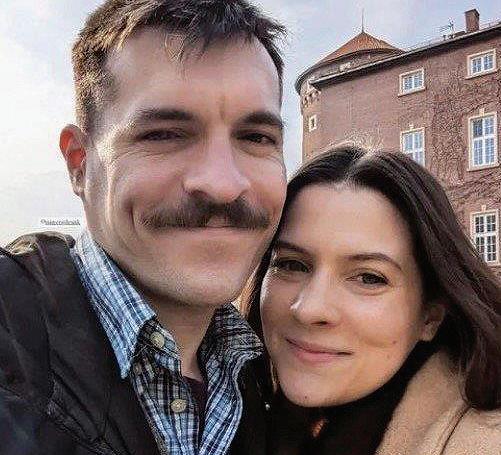
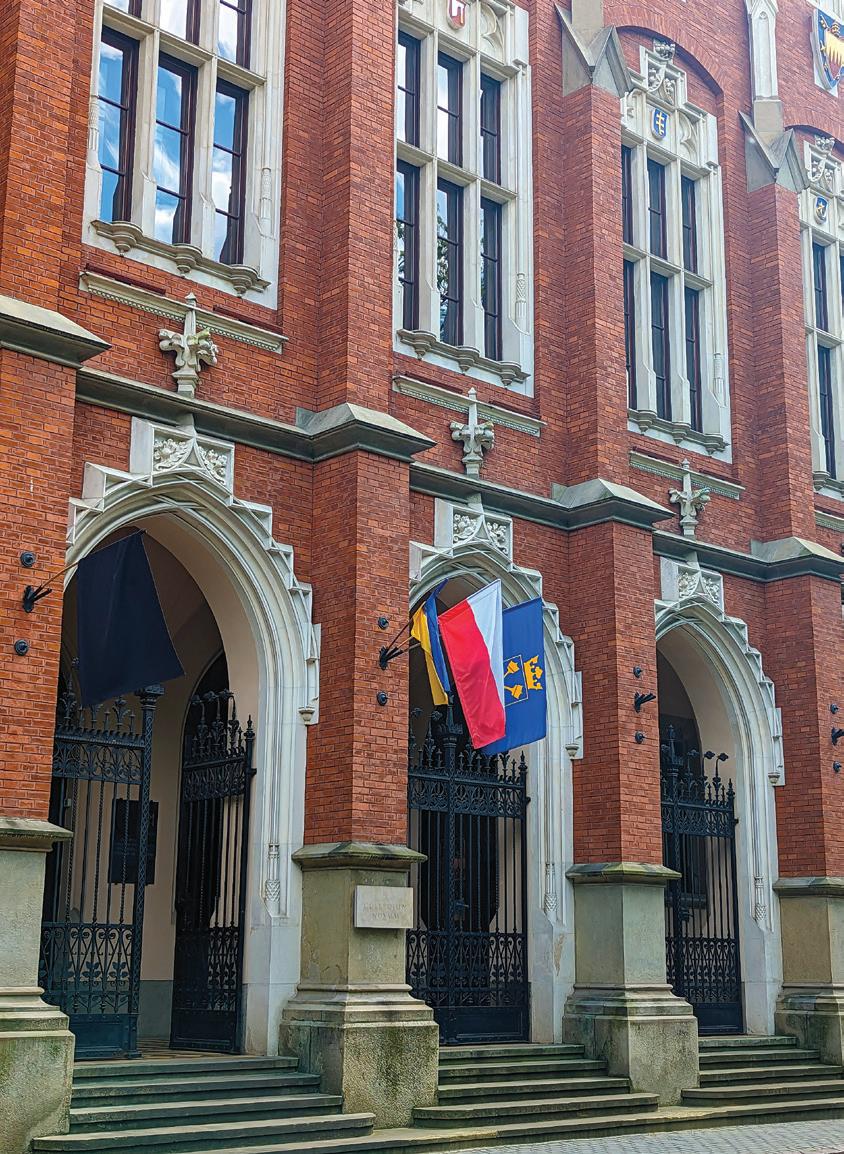
I can confidently say now that action conquers fear.
29 Spring 2024 ScottishRiteNMJ.org FEATURE
Jagiellonian University Medical College
Tanner and Andrea
MASONIC BROTHER HELPING UKRAINIAN REFUGEES continued

beautiful in its own way: mass civilian mobilization. Suddenly, a co-working center down the street where whitecollar workers used to have Zoom meetings and coffee became a war depot. Ukrainian men collected thermal gear and packed medical kits to drive across the border to baristas, IT workers, plumbers, and all sorts of ordinary people who now found themselves soldiers. Women and children braided tactical netting, diligently checking the weather reports in Ukraine to know whether their nets needed to be snow-camo or field green. While dropping off donations, I saw them in a back room working, the nets up on sawhorses while a projector illuminated a whole wall with news updates. Threatened with the destruction of their way of life, their culture, and their home, the Ukrainian people came together all over the city, just as those in their home country did. Facing an army that pundits predicted would crush them in days, they defended their homes near and far. Even after two years, their government and country still stand. It is nothing short of the
utmost bravery and absolutely awe-inspiring to witness first-hand.
Normal people in the city came together to provide places to stay, food, and supplies.
And they were not alone in this bravery or support. Normal people in the city came together to provide places to stay, food, and supplies. In the weeks after the invasion, it became part of our daily routine to visit various donation centers to see what was needed. The most wanted item was always diapers, followed closely by baby food. We also often bought canned foods and medicines. Pharmacies and grocery stores started to empty out, while food pantries and refugee centers filled up with supplies.
Our neighbor set up a naleśnikarnia in her studio apartment. She's Polish and American, so she enlisted a huge crew of Poles, Americans, Ukrainians, and a cute dog to create an assembly
line for making naleśniki, crepe-like Polish pancakes stuffed with sweet or savory fillings. They were then packaged into aluminum foil and dropped off at the train stations where hundreds of displaced people were arriving daily. We took turns cooking fresh naleśniki, rolling, stuffing, and delivering, often chattering together in multiple languages, singing songs, and munching on any extras. We, normal people with no training or funding, were passing out meals before international charities like World Central Kitchen finally took over. We threw a party to celebrate afterward, and another neighbor made pins to commemorate our efforts. I still see them pinned to backpacks and aprons around the neighborhood and at the local coffee shop.
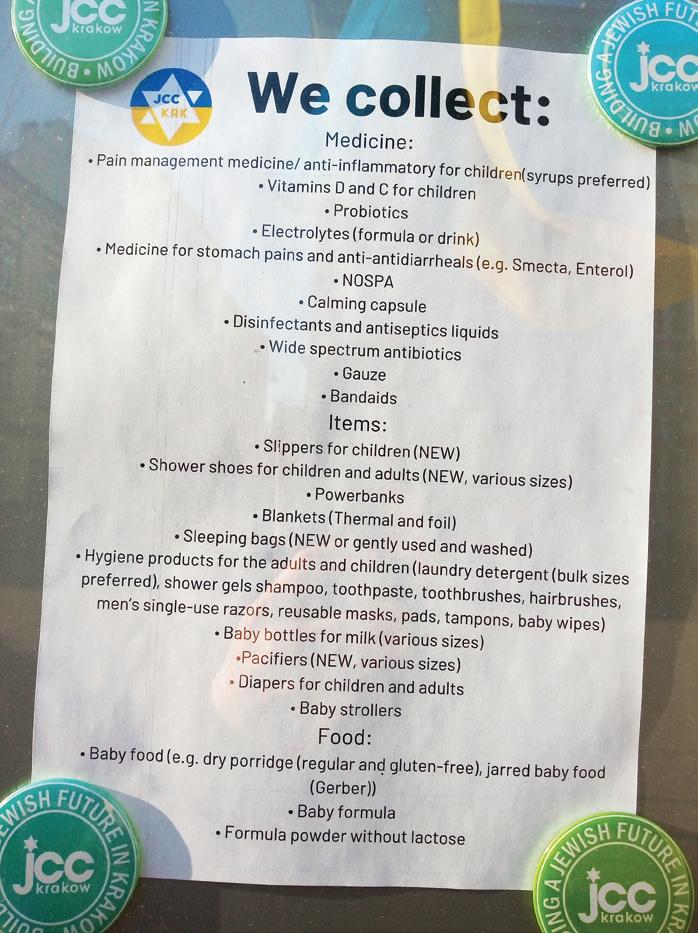
Many people back home were understandably worried about us, though we never once feared for our own safety. Often, when I see these world events on the news, I feel so helpless, having little to offer
The Northern Light 30 ScottishRiteNMJ.org
The lines have diminished, but people arrive every day.
besides a monetary donation. I can confidently say now that action conquers fear. Being able to help in our small way, buying donations, making food, and coordinating with people back home made it possible to face the situation. In updates to people, many offered to send money: $20 from my mom’s knitting friends, $300 from far-flung high school pals, and $50 from some random person who found my PayPal donion link. We coordinated with a pharmacist friend back home in Wisconsin who wanted to help. She contacted a menstrual cup company to donate sustainable products to displaced people, and she ran a women’s health fundraiser and supply-buying drive. We guided these to a student-led volunteer group at my medical school, which connected them to the multicultural center of Kraków, dispersing them as widely as possible in the city. Eventually, as the spring came and went, we heard about specific groups being left to fend for themselves: African students in Ukraine struggling to find room on the evacuation trains and then schooling in Poland and elsewhere, LGBTQ refugees not receiving the medical care and aid they needed, even other refugees trying to enter Poland and thus the EU but being blockaded for being mostly from Syria and Afghanistan. We found local, trust-worthy aid groups focusing on these people and allocated raised funds to them.


Looking back at the beginning, it often feels unreal. The news has become more focused on billions of dollars in aid and missiles instead of handfuls of allergy meds and warm socks for soldiers’ children. However, blue and yellow flags still fly all over the city, and many Ukrainian-owned businesses still receive donations. Now, we’re focused on settling our
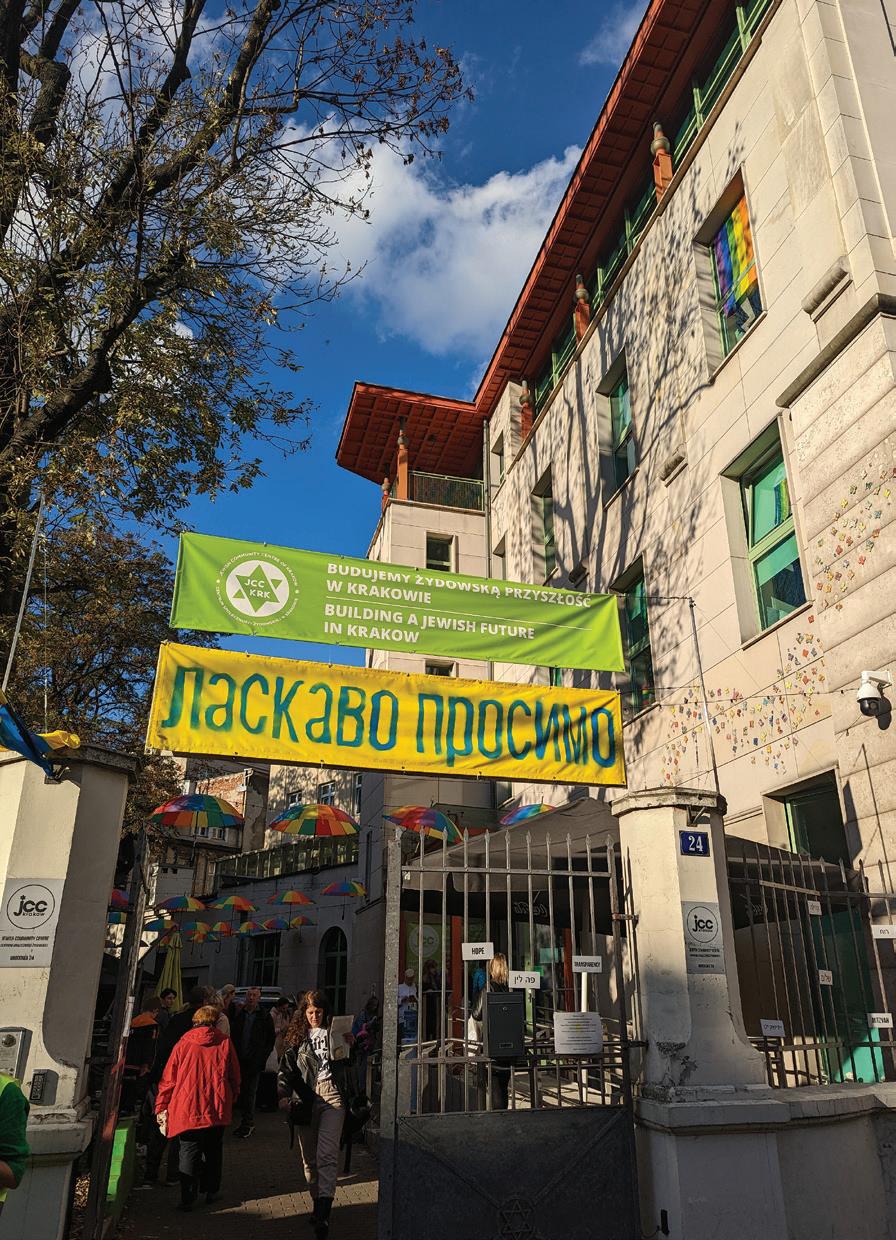
many new neighbors. The lines have diminished, but people arrive every day. We actually have had a few Ukrainian families move into our building. Some of the younger ones like to impishly pester us in the stairwell, ringing our doorbell asking to play soccer. They try out their Polish on us, practicing so they can get good enough to make friends at school. Sometimes I wonder if they understand what has happened to their country or what is still happening or that we also struggle to speak Polish. I suppose all that really matters is that they feel safe and welcome. The news has moved on, but lives are fundamentally changed. We still help in whatever ways we can. The most important thing is that we continue to support Ukraine and its people. After all, what else is community for? And if we don’t help the widows and sons, who will?
FEATURE 31 Spring 2024 ScottishRiteNMJ.org
A Night of Charity 2023

Amida winter wonderland backdrop, the 2023 Giving Tuesday telethon celebrated its greatest success to date, raising more than $750,000 for Scottish Rite Charities!
A Night of Charity kicked off with a banquet dinner and the induction of five new members into the Scottish Rite Masonic Museum & Library’s American Masonic Hall of Fame. Featured speaker Tweed Roosevelt, greatgrandson of inductee Teddy Roosevelt, delighted audience members with tales of the 26th President’s life.
Brothers PJ Roup, 33°, and John Brian McNaughton, 33°, served as hosts for our sixth annual Giving Tuesday Telethon, engaging audience members and viewers at home as they celebrated the life-changing work of Scottish Rite Charities and some of the supporters who help make this work possible.
The night closed with Brother William Clark III sharing how the charitable efforts of the Fraternity changed his life not once, but twice. Diagnosed with cerebral palsy at an

“To me, Freemasonry is hope.”
Special thanks to all the sponsors, Valleys, and individuals who contributed and helped make this night and stories like Brother Clark’s possible.
C The Northern Light 32 ScottishRiteNMJ.org GIVING TUESDAY:
Supreme Council staff celebrate a record breaking Night of Charity.
Commander Wheeler presents Tweed Roosevelt with a portrait of his greatgrandfather, Brother Teddy Roosevelt. Tweed Roosevelt and Brother William Clark early age, Brother Clark shared moving words that resonated with many:

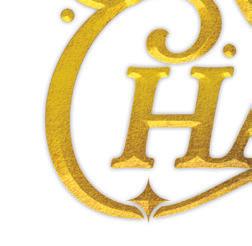


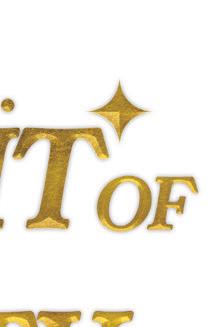
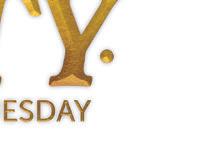

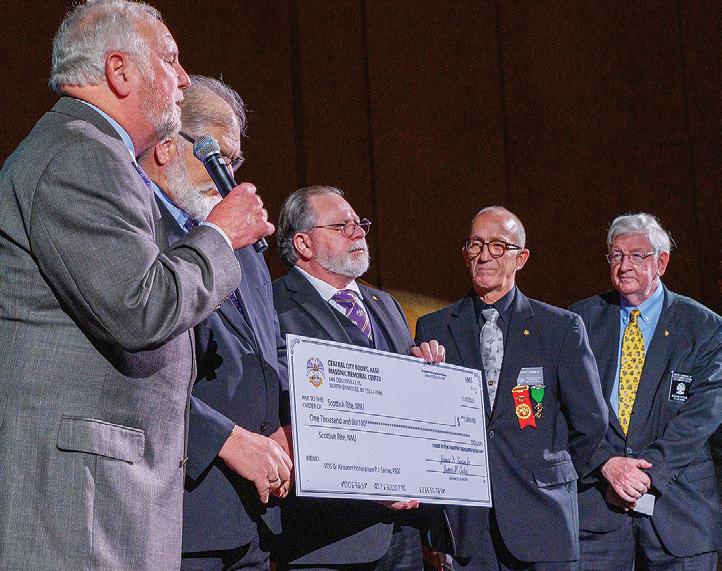



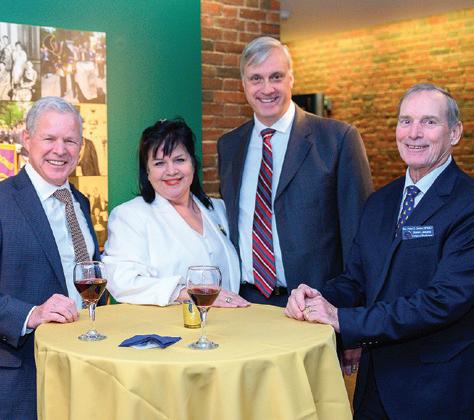

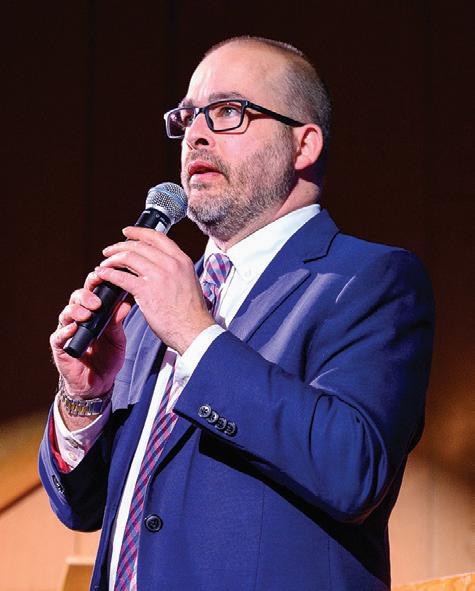

over $750,000 Total Raised More scenes from a most successful Night of Charity. THANK YOU! 33 Spring 2024 ScottishRiteNMJ.org CHARITIES
One Child at a Time

As a high school special education teacher for the last 25 years, Jay Werner, 32°, said he has encountered hundreds of students who make it to high school and cannot yet read. As a tutor for New York City’s newly opened Children’s Dyslexia Center (CDC), Brother Werner hopes to reduce that number, one student at a time.
Jay is currently the Worshipful Master of John Jay Lodge No. 653 in New York and has been a member of Scottish Rite’s Valley of The Hudson since 2017. Before he joined Scottish Rite, he heard buzz from Brothers in New York that a dyslexia center would be opening in the city. He reached out to New York’s Past Grand Master, William Sardone, 33°, and current Grand Master, RJ Kessler, 33°, to express his interest in tutoring at the CDC.
“Within 5 minutes of my talking to them, I got a call from the Scottish Rite saying, ‘You’ll be in the first class,’” Jay said. To obtain a CDC teaching certification, tutors are required to log 100 hours of student instruction. In exchange for those 100 hours of instruction, training at NYC’s Center is offered free of charge.
CHILDREN’S DYSLEXIA CENTER’S TUTOR, JAY WERNER
The Northern Light 34 ScottishRiteNMJ.org C
Jay Werner
by Joann Williams-Hoxha, Content Manager
Teaching children to read is something Jay says he has always wanted to do. Not only is it rewarding on a personal level to provide children with a critical lifelong skill, but he said working at the CDC also provides a way to give back to an organization that helped his relative learn to read as a child. His wife’s younger cousin, Katie, went to a center in Albany for dyslexia remediation, and she is now a successful young adult thanks to help from Scottish Rite’s CDC.
Tuesdays and Thursdays are busy for Jay. Right after his day job teaching in the Bronx, he jumps in his car and heads to 71 West 23rd Street, just a 5-minute walk from New York’s famous Flatiron Building. It typically takes Jay between an hour to an hour and a half to go about six miles, but “it’s a great opportunity for me to come here and work with kids,” he said.
Jay tutors 12-year-old Xavier, whose mother said he was diagnosed with dyslexia at a later age. She struggled to find a tutor in her neighborhood who utilized Orton-Gillingham, and she found the Center through a Google search. The Orton-Gillingham method provides a multisensory structured language education (MSLE) approach to learning, where children are taught to analyze words using synthetic and analytic strategies.
“I try and make it as enjoyable as possible for my students,” Jay said. “I learn their language.” And by language, Jay doesn’t just mean their native tongue. Xavier is interested in
art and music, so Jay incorporates those elements into his lessons to spark more interest.
NYC’s Children’s Dyslexia Center has gone from six students, once they opened in November of 2022, to 21 students and 13 tutors.
For the student that he tutored last year, he would put her favorite soccer player, Lionel Messi, into the stories she was reading. If Jay forgot to include Messi in the story, she would immediately inquire about her star player.
Teaching children from all over the world has also provided unique challenges of their own, as English is often a second language for the children Jay teaches. Children not only have to decipher words on the page, but they also have to translate the words from English into their home language. “I envy them in their ability to do that,” Jay said. “And I feel for them when they try and go from their home language to English and struggle with it.”
He thinks about his grandparents, who were not native English speakers.
“My grandfather spoke Hungarian, Czech, some Polish, some Yiddish,
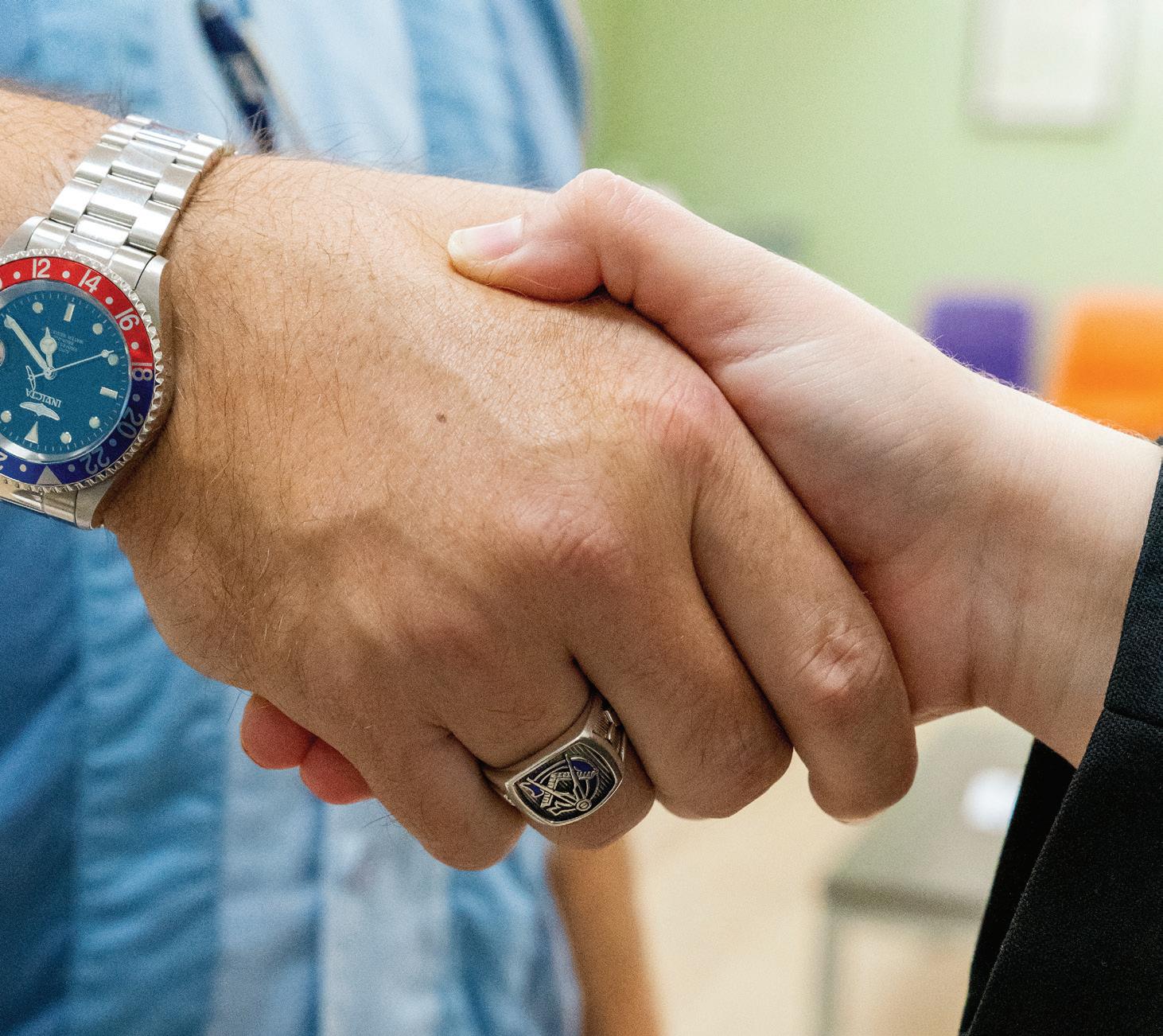
35 Spring 2024 ScottishRiteNMJ.org CHARITIES
Jay wearing his Masonic ring with pride
ONE CHILD AT A TIME continued
and English was the last language he learned.”
Jay said he asked his grandfather how he learned English, and his grandfather told him he learned by going to a restaurant.
“How did you read the menu?” Jay asked. His grandfather said he would listen to people order different things, and then find it on the menu. As the food came out and was delivered to each patron, he would discover what looked most appetizing to him. It
wasn’t long before his grandfather learned to find bacon and eggs on the menu and say it out loud.
“I try and make it as enjoyable as possible for my students,” Jay said. “I learn their language.”
The mayor of New York City, Eric Adams, is dyslexic. As such, he has made dyslexia screening for local students a top priority. Still, from
For more information on your local Center and how you can help students access essential tutoring resources, please visit: www.ChildrensDyslexiaCenters.org
Jay’s perspective as a teacher, he said, “Similar to many large school districts, New York City lacks the wherewithal to deal with students struggling with a learning disability.”
NYC’s Children’s Dyslexia Center has gone from six students, once they opened in November of 2022, to 21 students and 13 tutors. Jay hopes to see the expansion of more CDCs across the state. Until then, he is committed to bridging the dyslexia gap, one child at a time.
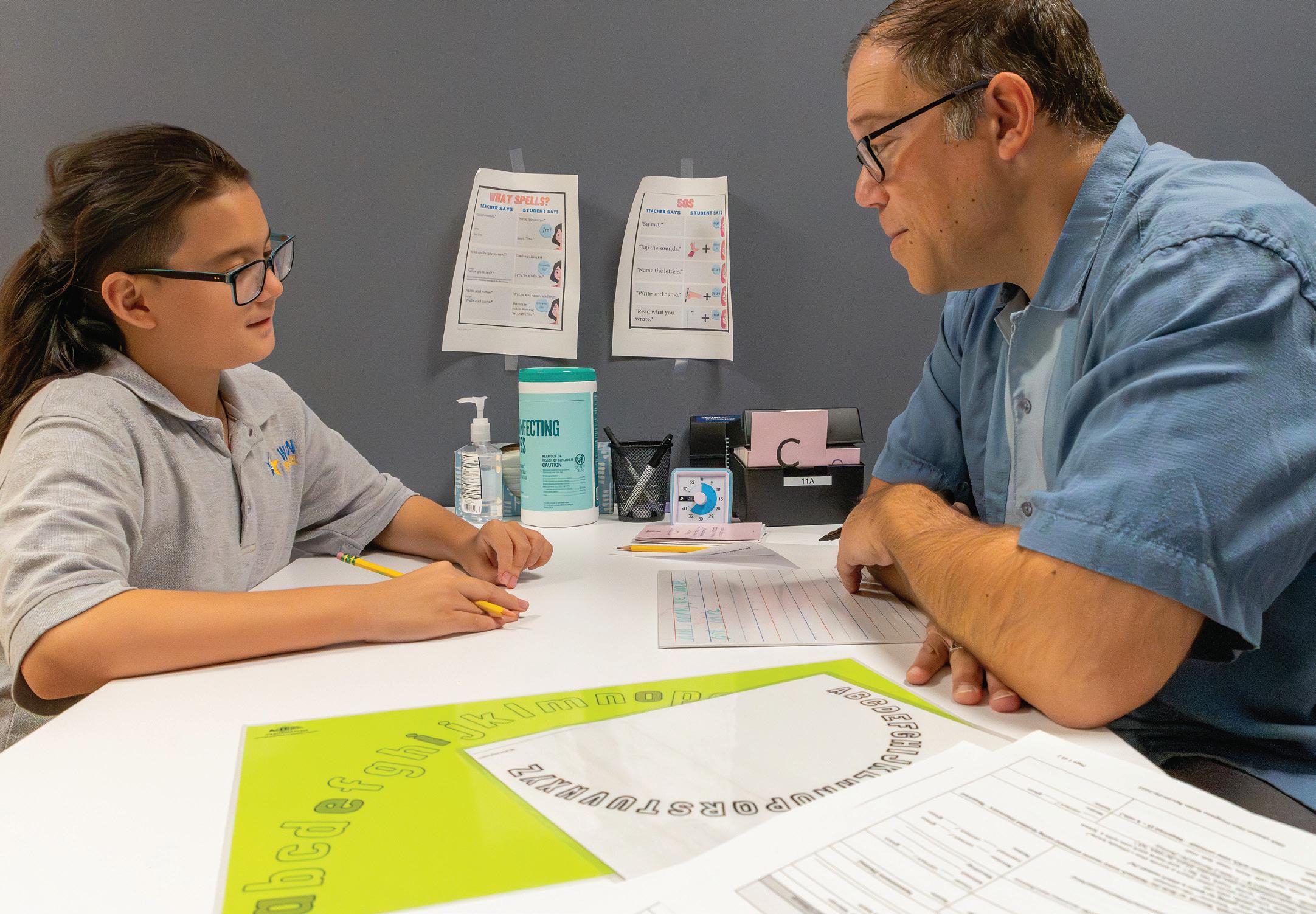
C The Northern Light 36 ScottishRiteNMJ.org
Jay tutoring a CDC student
! CHARITIES

Let's connect, share stories & transform lives together! Let's connect, share stories & transform lives together!

To learn more and connect with us, scan the QR code or go to ChildrensDyslexiaCenters.org/links today!
We're also on Facebook! Follow us by going to Facebook.com/Dyslexia1994 or by searching Children's Dyslexia Centers - Nonprofit Organization
ChildrensDyslexiaCenters.org/links
The Children’s Dyslexia Centers, Inc. is a 501(c)(3) charitable non-profit organization headquartered in Lexington, Massachusetts with tutoring locations throughout the United States. EIN 04-3169620 • IMSLEC® Educator Accredited • 33 Marrett Road, Lexington, MA 02421
ARIZONA AND FLORIDA
Commander’s Tour 2024



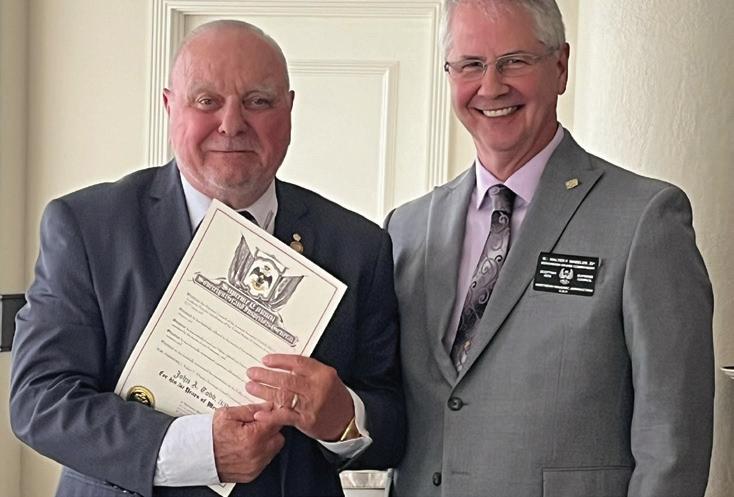


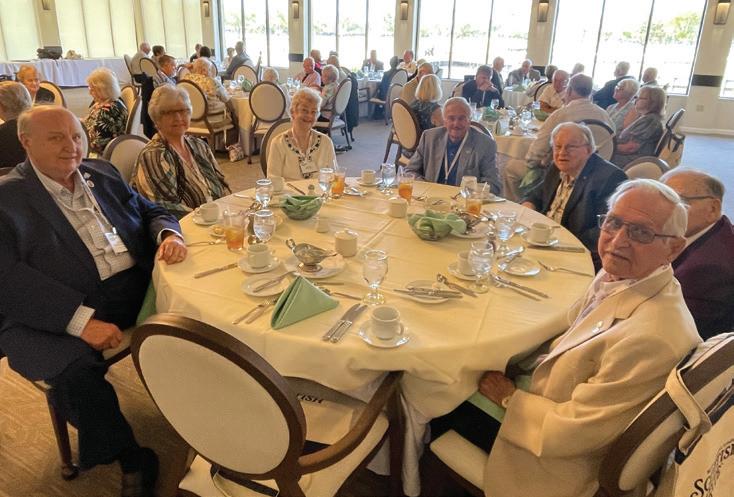
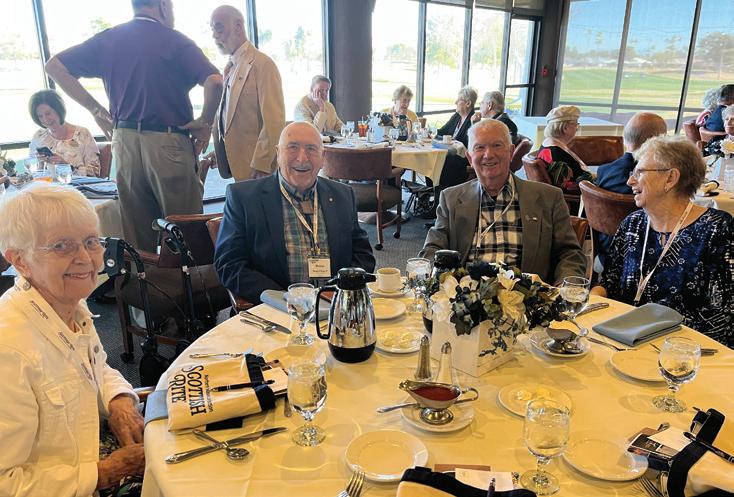
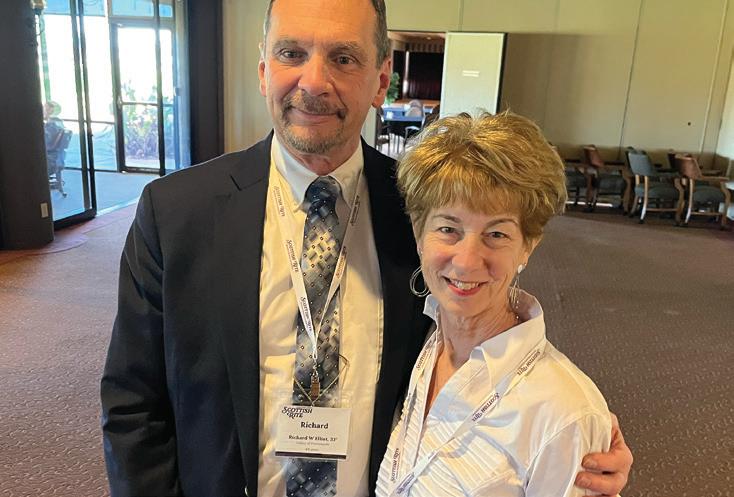

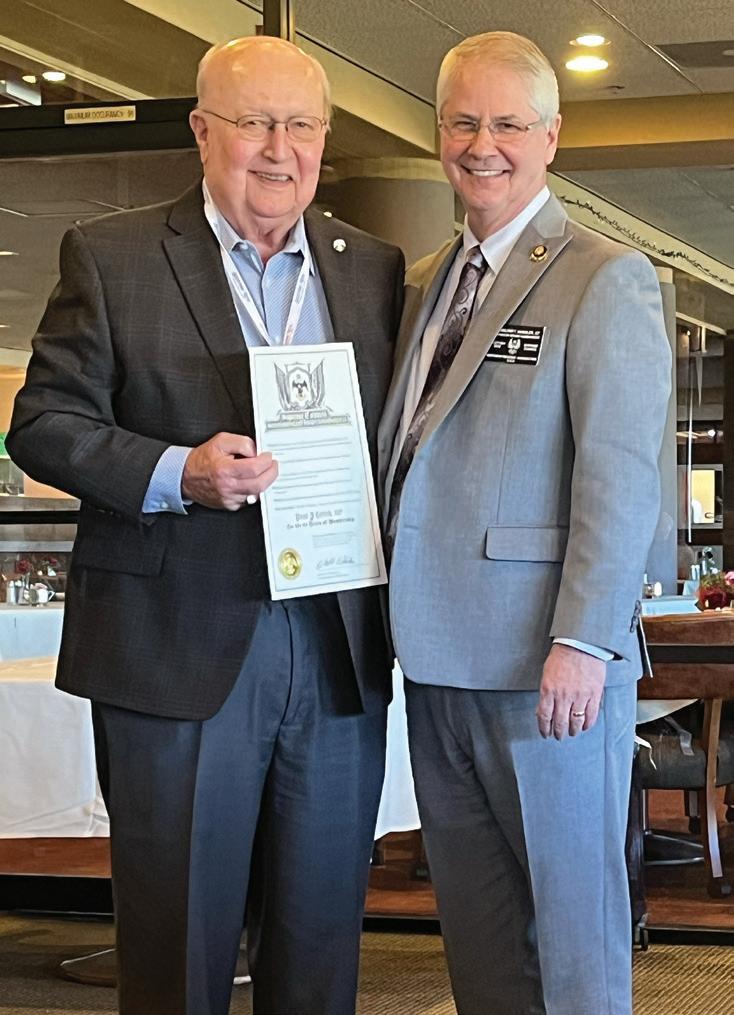



C The Northern Light 38 ScottishRiteNMJ.org
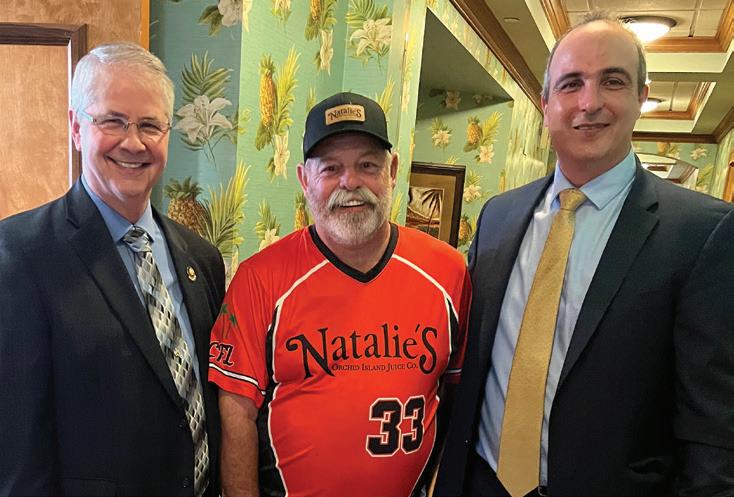



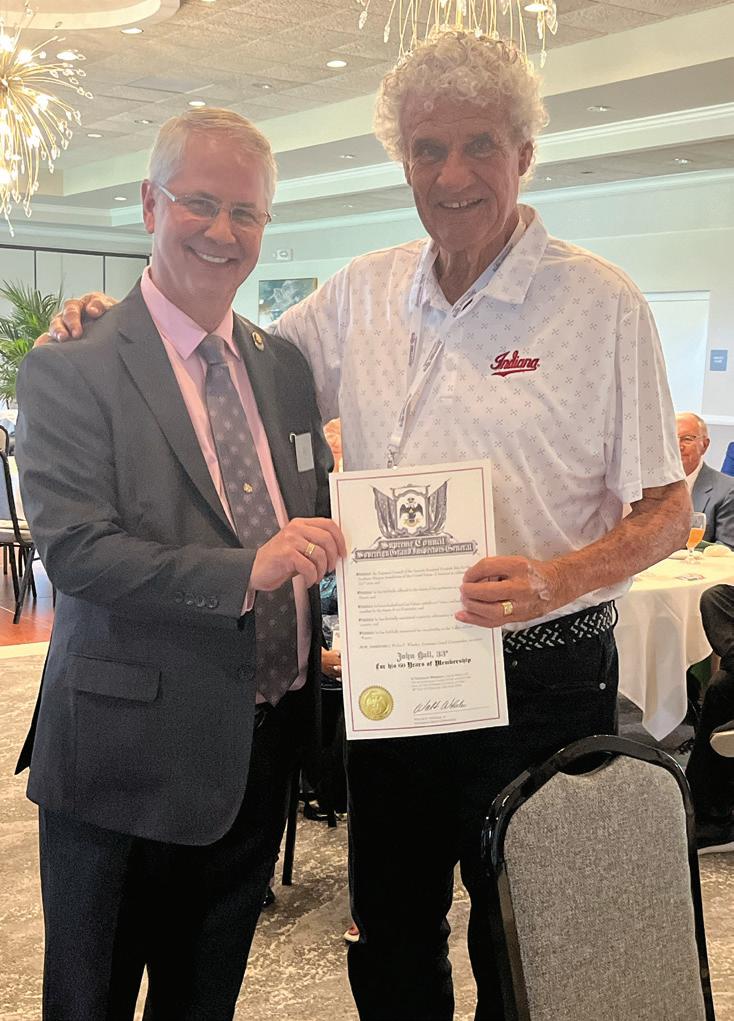




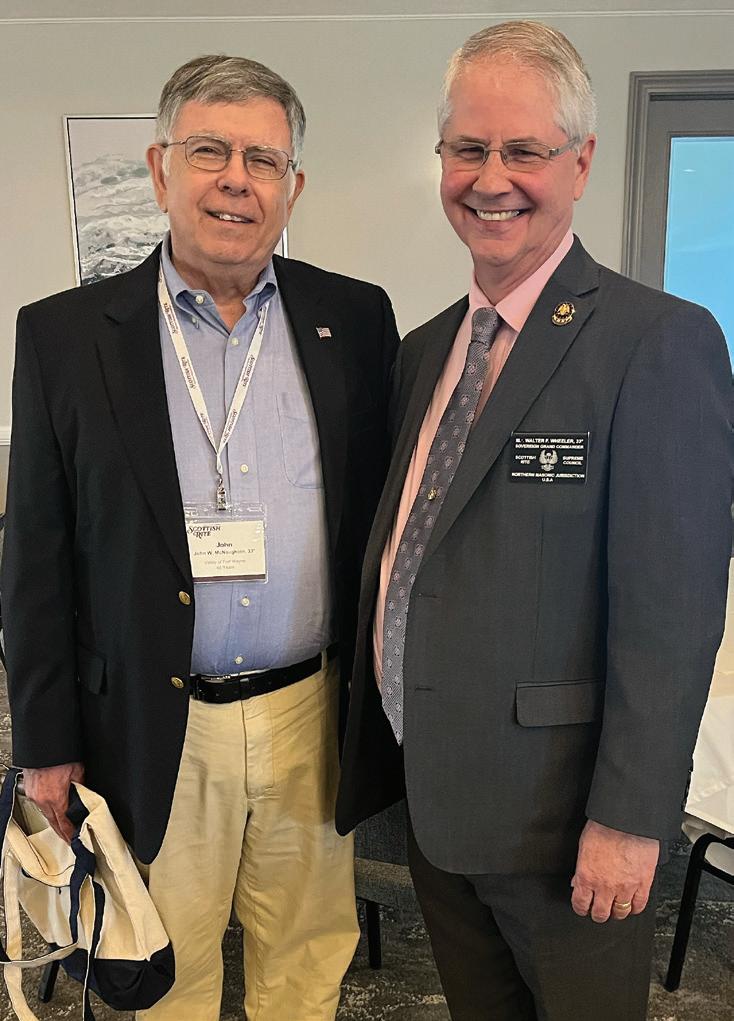


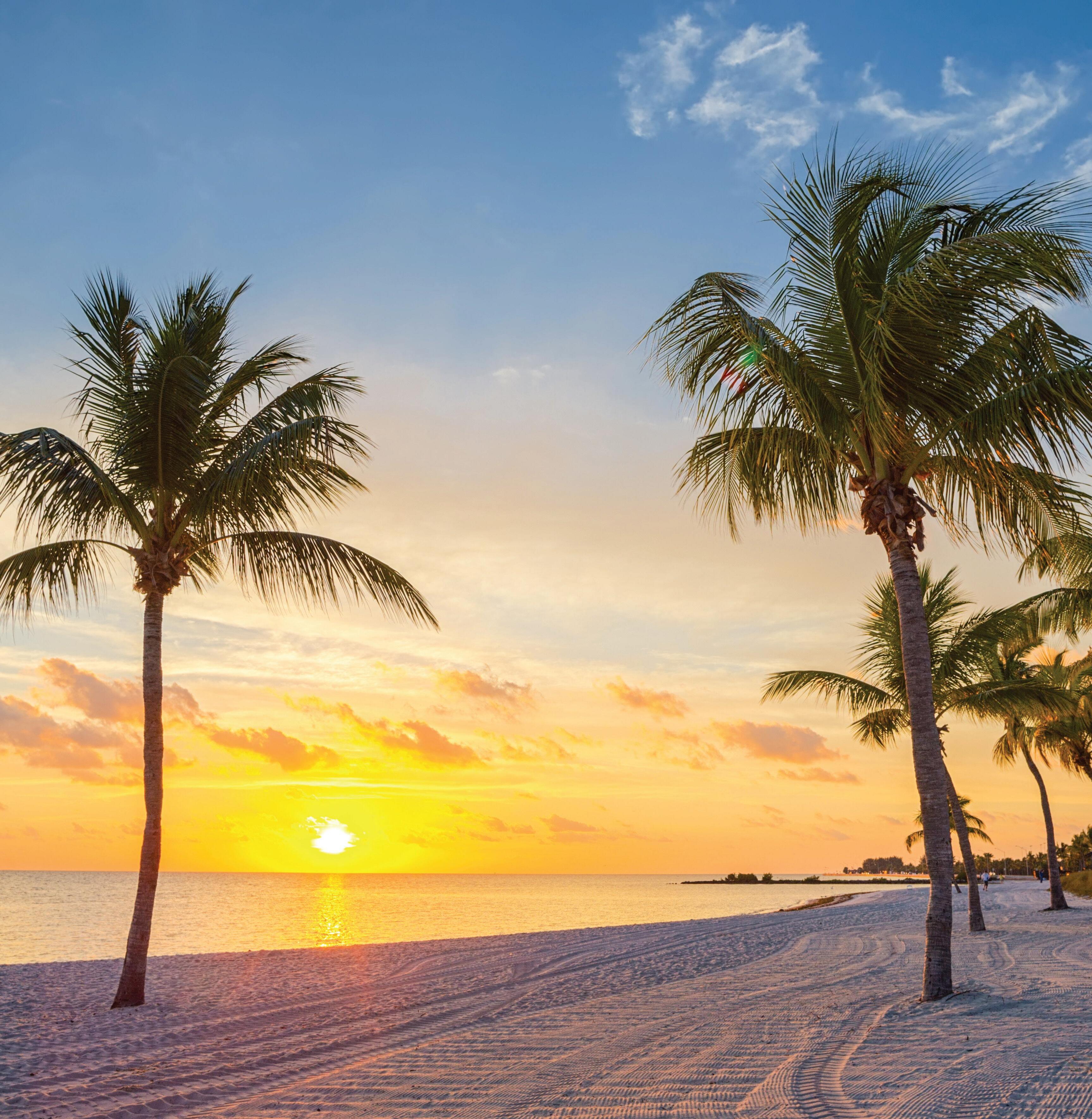
39 Spring 2024 ScottishRiteNMJ.org CHARITIES
Masons Got Game

Michigan Freemasons are not only meeting on the level – they are meeting within the intricate realm of pixels and polygons, where online gaming comes to life. Meet Scottish Rite Brothers Josh Marshbanks, 32°, and Joshua Testasecca, 32°, founders of the Valley of Michigan’s gamer’s club known as “Gaming Rite.”
Brothers
Marshbanks and Testasecca formed Gaming Rite in 2021 as a means of connecting with other Freemasons during a time when in-person social connection was particularly challenging due to the COVID-19 pandemic. Geographically, it also made sense to have the club gather online.
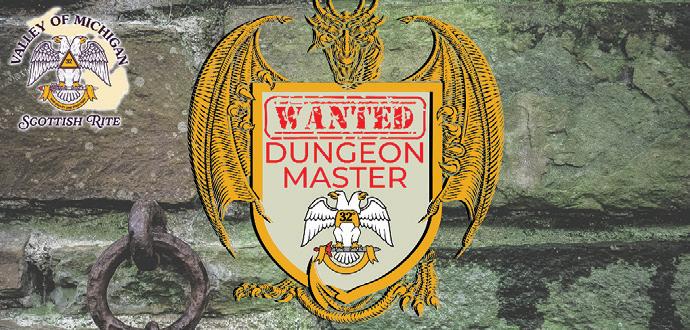
“We’re a much bigger state, where it can take eight hours for a member to travel from Marquette in the Upper Peninsula to Detroit or Grand Rapids. It never seemed feasible to create an event to travel to,” Brother Marshbanks explained.
The Northern Light 40 ScottishRiteNMJ.org M
Minecraft
Dungeon Master
by Joann Williams-Hoxha, Content Manager


Brother Testasecca created the online meeting space, where members gather to play games and participate in discussions ranging from food to Valley-specific announcements. Online degree rehearsals could be another possibility if there is interest, Marshbanks added – the sky is the limit!
Gaming Rite provides an easy way to bring Freemasonry, particularly the Scottish Rite, into their normal gaming circle as a potential recruitment opportunity.
Currently, Gaming Rite has approximately 60 participants, with most members under the age of 50, including Brothers Marshbanks and Testasecca, who are in their 30s and members of the Valley of Michigan.
Gaming Rite provides an easy way to bring Freemasonry, particularly the Scottish Rite, into their normal gaming circle as a potential recruitment opportunity, especially among younger men, they said.
“The game Dungeons & Dragons is our biggest draw, with Minecraft second,” said Marshbanks. Both games involve fantasy role-playing, where players can combine forces on various adventures and level up in experience.
“During our first campaign, our Dungeon Master was in the ‘U.P.,’ and we had Brother Masons on the East and West Coast joining in online through our Discord server. That was the biggest surprise to me,” Marshbanks said.
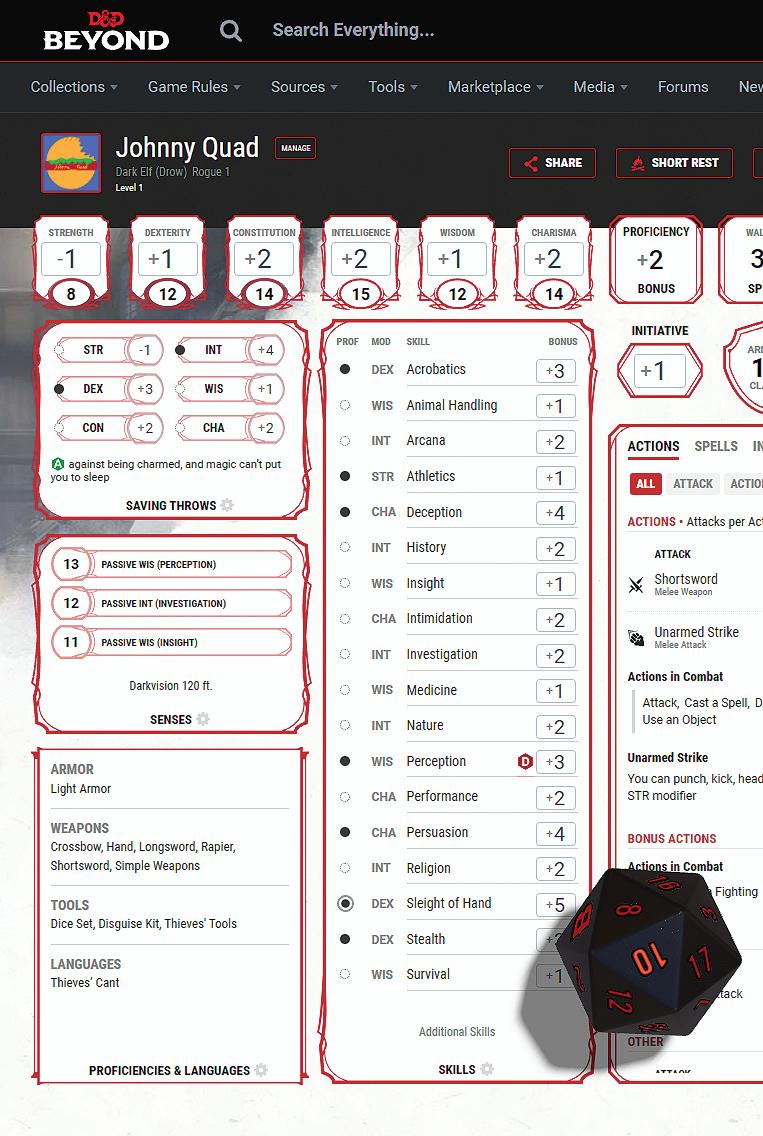

“What I would love to do is recreate all our degrees within Minecraft. I can envision the whole 4th degree [Builder] in Minecraft – spectator mode,” Marshbanks said. “It’s not as ridiculous as it sounds! Someone even created the mythical Solomon’s Temple. It’s a big feat, but with the right people and mindset, it can be done for future Masons to enjoy.”




?
Interested in being a part of this online gaming experience? Any Master Mason in good standing is welcome to create a free account and join – simply sign up at www.vomdiscord.com.
MEMBERSHIP 41 ScottishRiteNMJ.org Spring 2024
Brother Josh Marshbanks at a Gamers for Giving charity event that raised over $500,000 for entertainment devices for hospitalized children.
Gaming map
Potential character aliases of Gaming Rite members
Gaming Rite customized the double-headed eagle to create their own brand mark.
Around the Jurisdiction
It Takes a Valley
The Valley of Uniontown is one of just a handful of one-body Valleys in the Northern Masonic Jurisdiction. Brother Abe Hayes, 32°, Thrice Potent Master, reflected on just what it takes to hold a reunion there.
“From the early stages of planning to the weeks leading to the weekend of the reunion, it’s truly an amazing sight to see,” says Abe Hayes, 32°, Thrice Potent Master. “To say that I am amazed to the outpouring of volunteers who are there to make sure all the Is are dotted and the Ts are crossed would be an understatement.”
Their Valley shares space with two blue lodges, and as such, they need to transform the shared space into a stage for their annual Scottish Rite reunion. It’s no small feat, but the Brethren there use it as a chance to fellowship as well. This past November, 29 Brothers from the Valley gave up a Saturday to transform the lodge room into a fully functioning proscenium stage. J. Blair McGill, 33°, Deputy’s Representative noted, “Their work exemplifies the fact that when Freemasons engage in any just and laudable undertaking, they go hand in hand with unanimity and success generally crowns their efforts.”
Brother Abe added jokingly, “The Brethren do this work year after year either for the true love of it or because they like to punish themselves, whichever it may be.” Because of that love, this year, they had 25 Valleys from eight different states visit their reunion.
“From the setting up of the stage to the countless rehearsals, to the weekend of the reunion through including the tearing down of the stage the day after it truly does take a small village,” noted Abe.


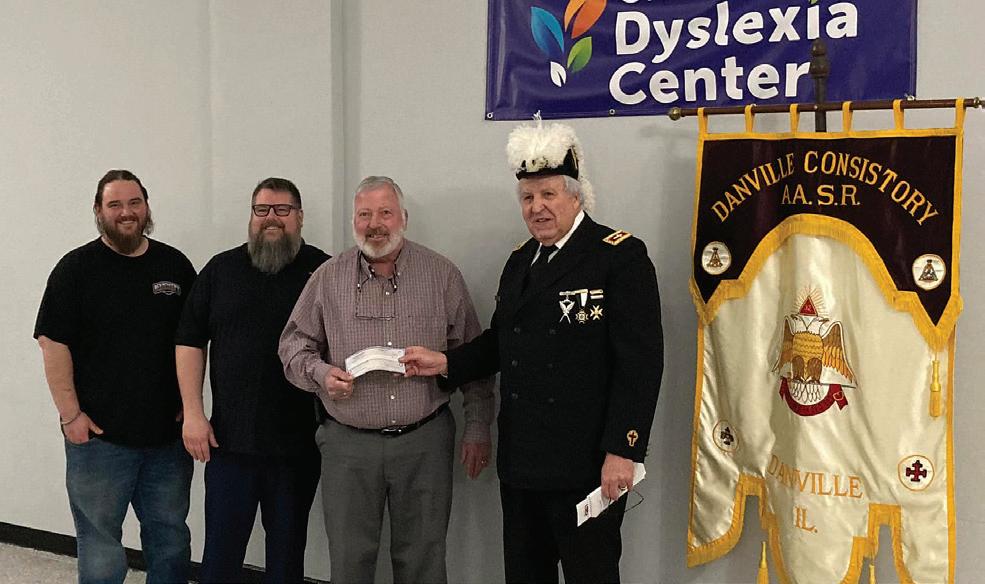
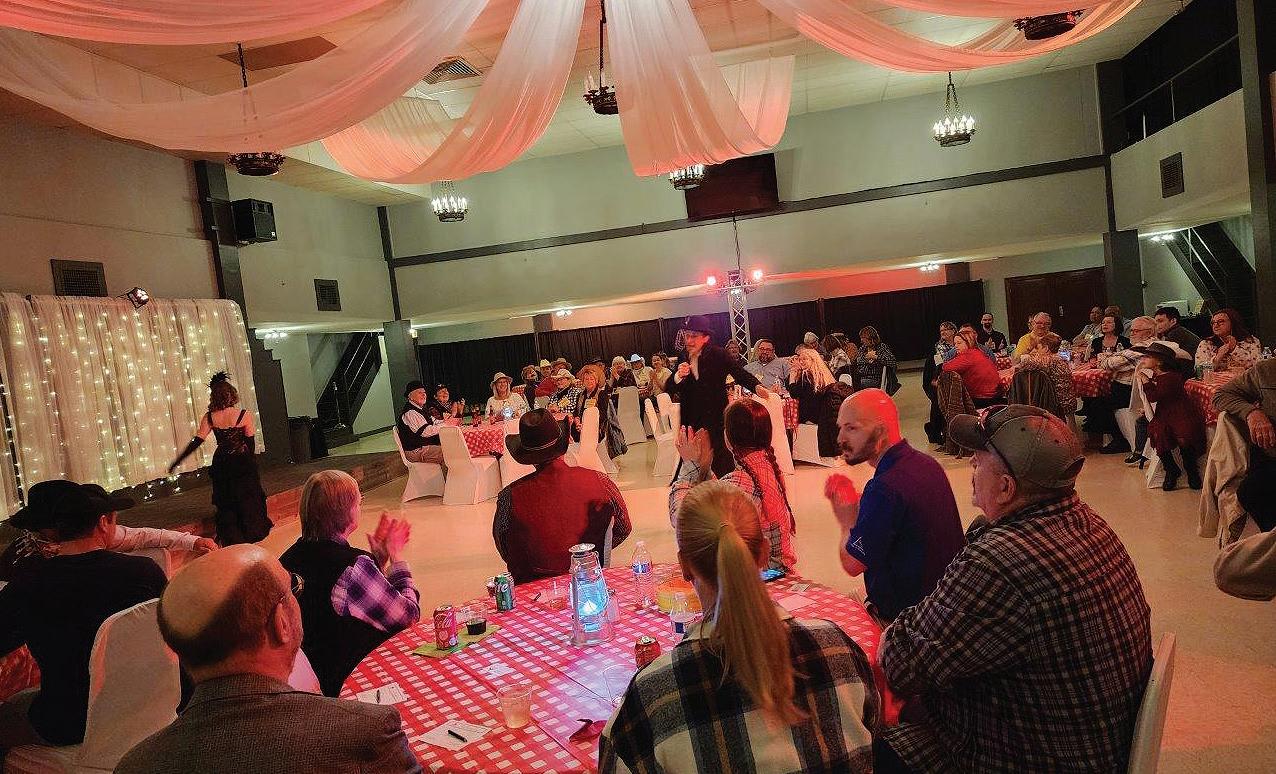
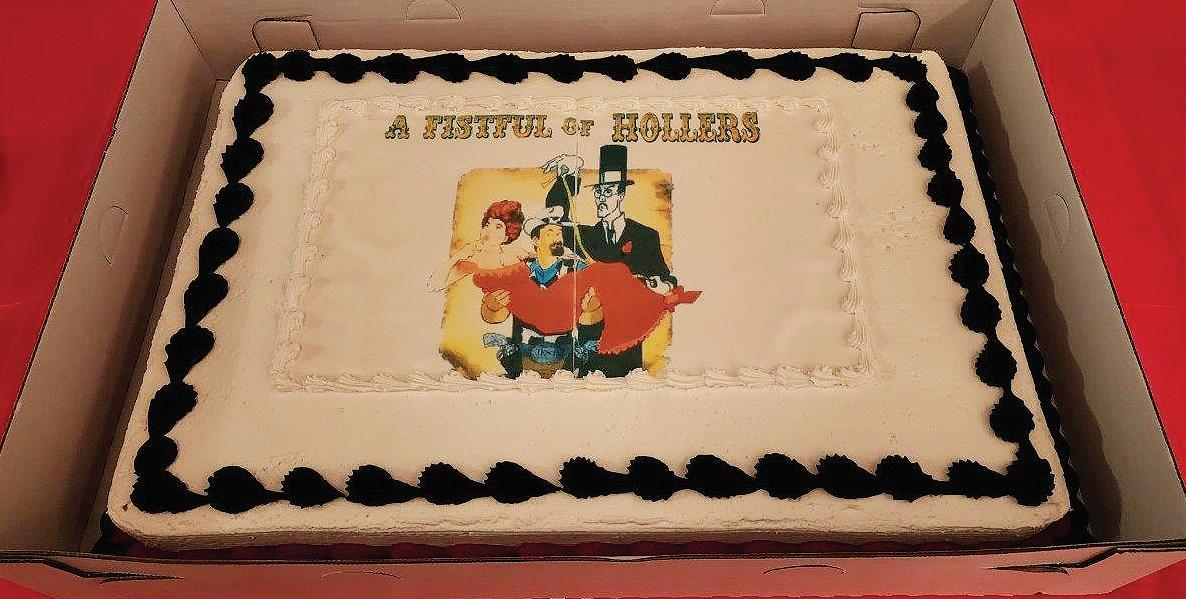

42 ScottishRiteNMJ.org The Northern Light
Board members from the CDC of East Central Illinois accepted a donation from the Illinois Knights Templar Outreach. IL
Stage assembly begins
PA
M
The stage is set
PA
Ill. Brother Edsel Emery, 33°, HGA, and a friend take a break at the Valley's Easter bunny breakfast.
OH
IN
Members of the Valley of South Bend enjoyed a murder mystery entitled, “A Fistful of Hollers.”
IN
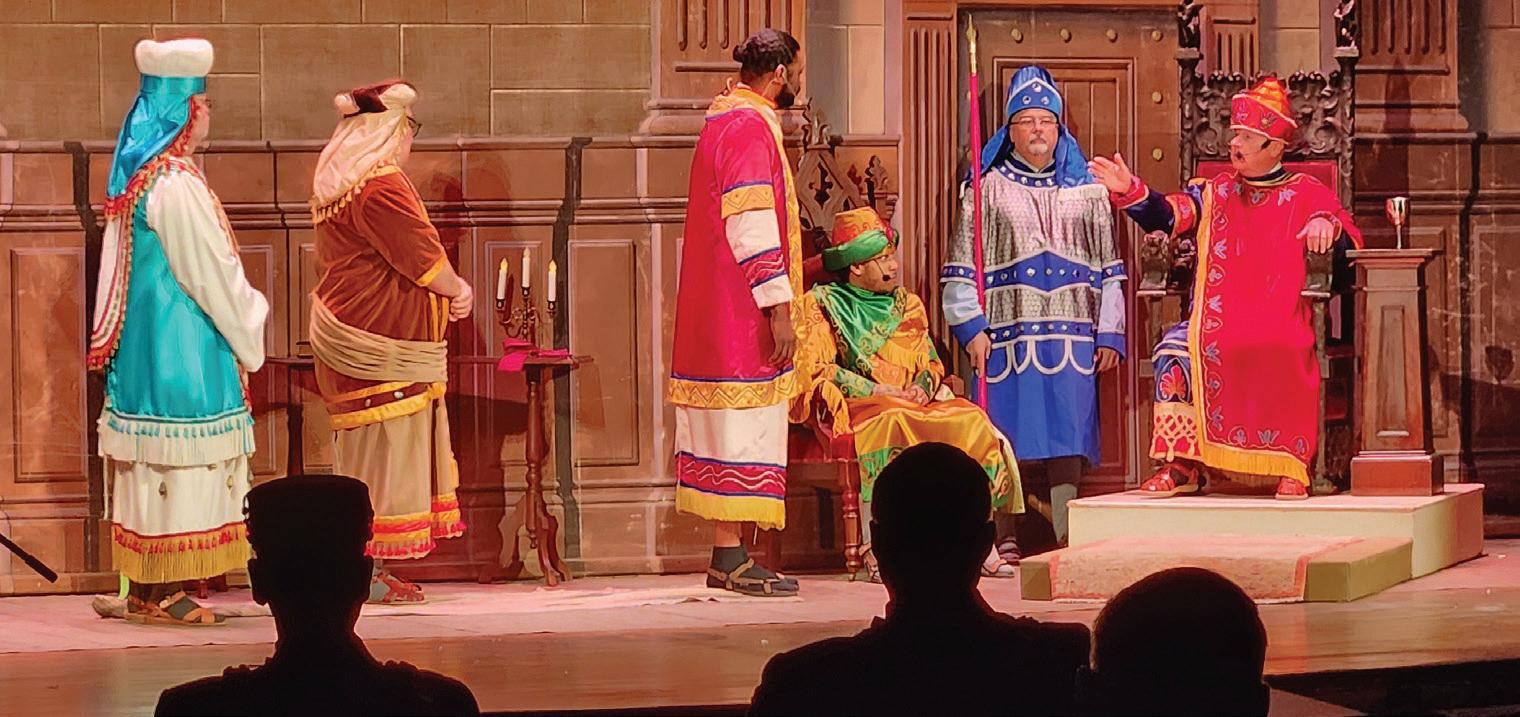
ME
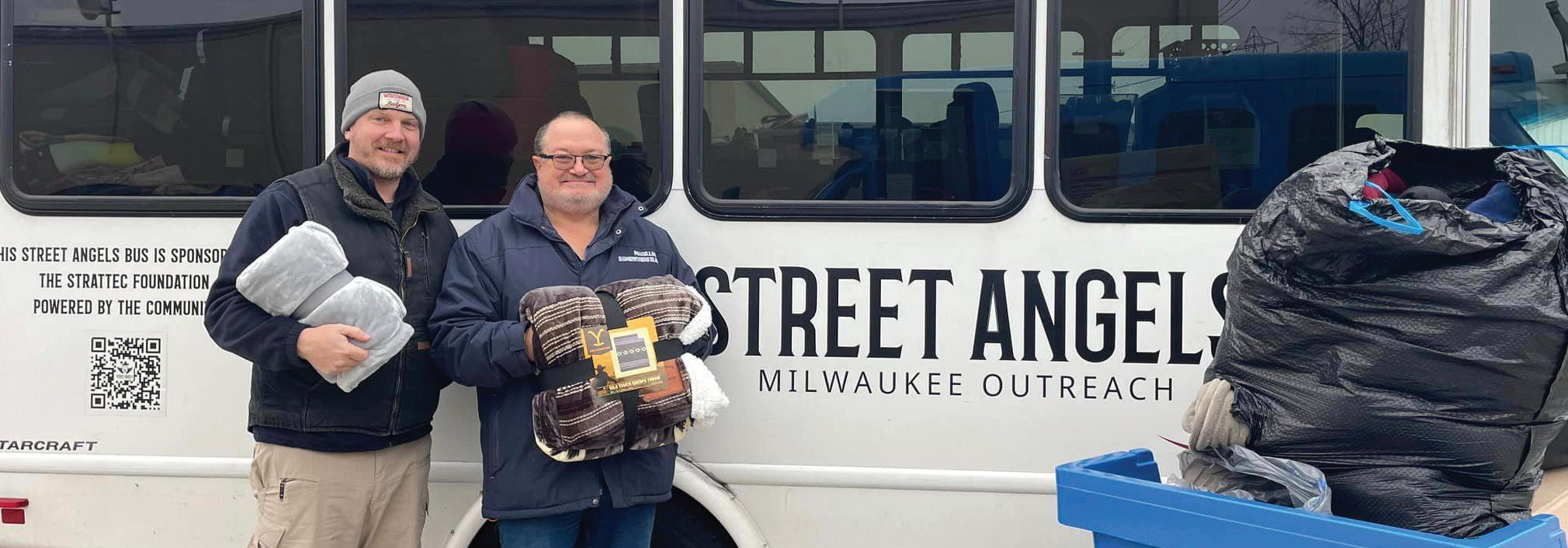
NY WI
The Valley of Springfield’s Ill. Melvyn Hook, 33°, accepted the Valley of Excellence award from Ill. Scott Ingliss, 33°, Deputy for Massachusetts.
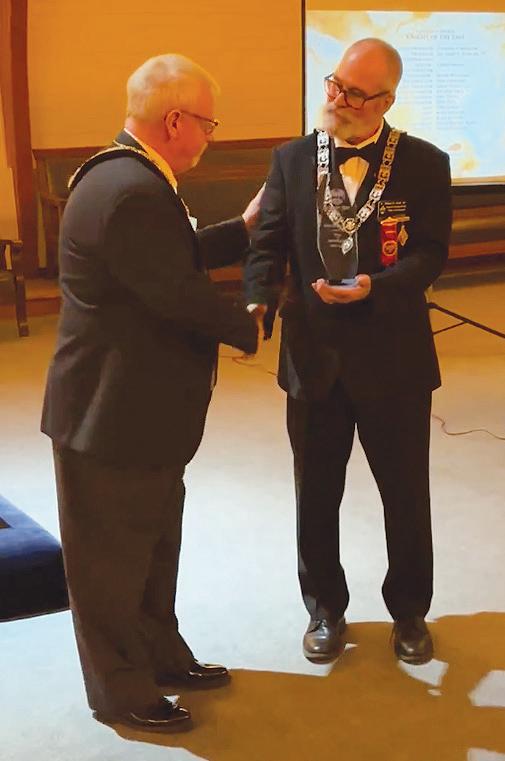
MA
Brethren from the Valley of Milwaukee presented hundreds of blankets and articles of clothing to Street Angels to help local families in need.


CT
Spring 2024 MEMBERSHIP 43 ScottishRiteNMJ.org
The Valley of Portland performing the 8th degree, Intendant of the Building
New members and cast from the Valley of Bridgeport reunion in December
Cast members from the Valley of Syracuse presentation of the 16th degree
Around the Jurisdiction
Members of the Valley of Michigan honored Brother George Washington for President’s Day.

Brother and General George Washington paid a visit to the Valley
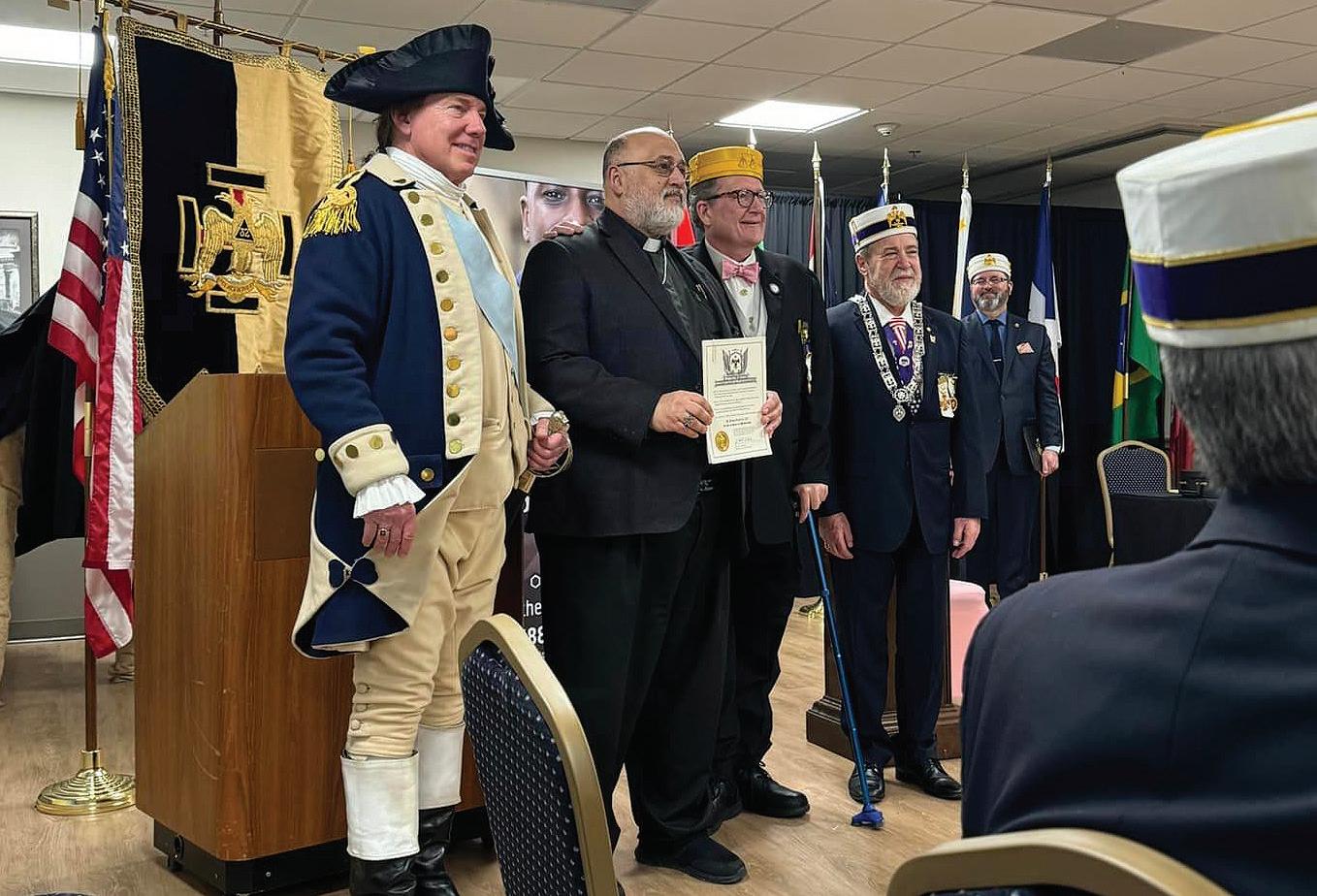

continued NY MI

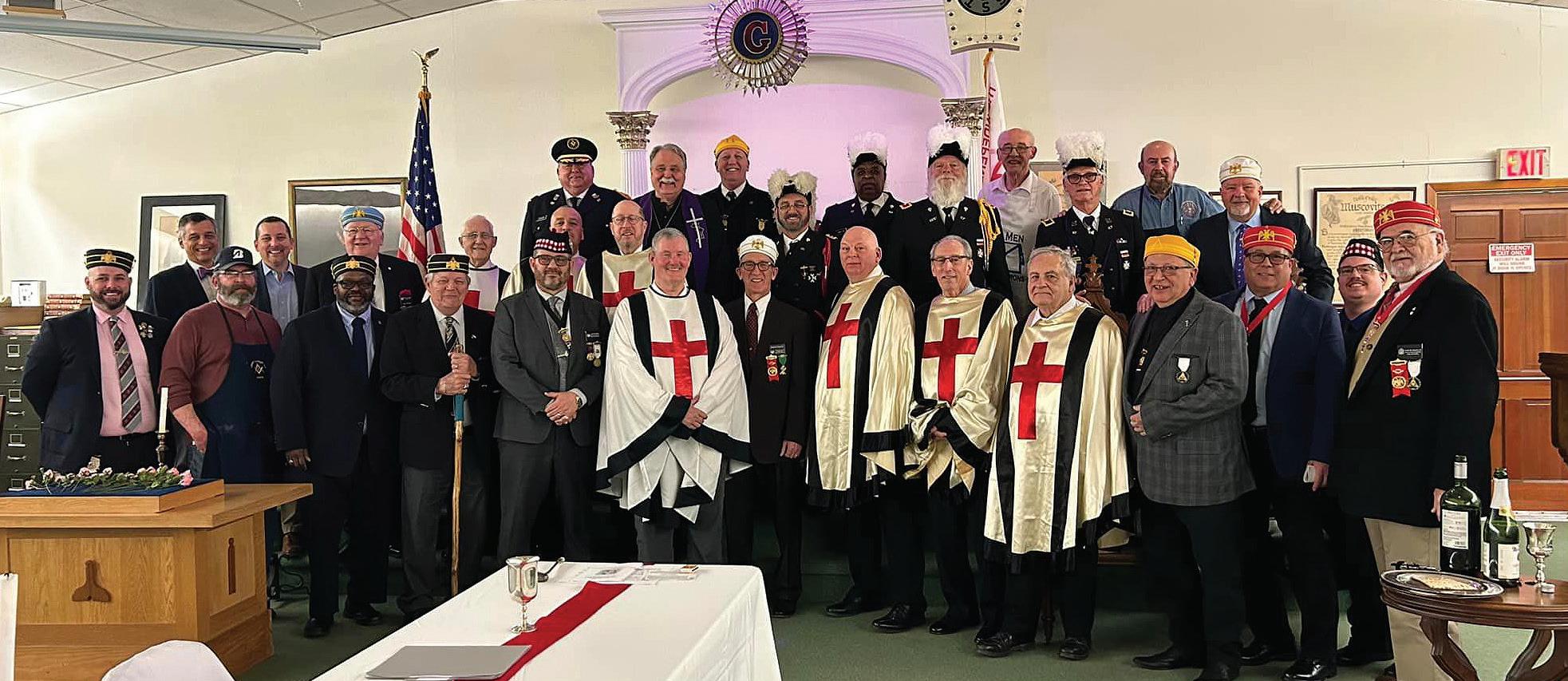
The Northern Light 44 ScottishRiteNMJ.org M
Members of the Valley of The Hudson at their annual George Clinton Feast of the Paschal Lamb
The Valley of Michigan performed the 26th degree at their Southeast regional reunion in March. MI
Brother Louis Irizarry, 32°, MSA, received the Supreme Council’s Medal for Masonic Service. NY NJ
of Northern New Jersey.
Candidates were all smiles at the Valley of Concord’s Rite on the Road event at Mt. Lebanon Lodge.

NH

VT
Don Paul, 33°, Commanderin-Chief of the Valley of New Castle, presented Brother Aaron Paoletta, 32°, with his gold passport.

PA

PA
If you would like to have your Valley featured in Around the Jurisdiction, be sure to submit photographs and descriptions to Communications@SRNMJ.org !
Members of the Valley of New York City

NY
Digital Degree Marathon
On Saturday, February 25, 2024, the Valley of Portsmouth Dover hosted its second annual Digital Degree Marathon at the Portsmouth Masonic Temple. Five candidates, representatives from eight NMJ states, and nearly 100 Scottish Rite members attended this innovative event. The morning started with a coffee and donut social hour, followed by the presentation of the 4th, 7th, 12th, and 16th degrees. Following lunch, the 17th, 27th and 30th degrees were presented. The day included a new member orientation, and following each degree, a discussion was held to delve into the Core Values depicted and deeper meanings of each degree.

NH

NH
The
MEMBERSHIP 45 ScottishRiteNMJ.org Spring 2024
Members and candidates view video presentations of the degrees
Members of the Valley of Rutland celebrated the holidays with their ladies.
newest members of the Valley of Portsmouth Dover
posed after their performance of the 18th degree.
Members of the Valley of Philadelphia were “Freezin’ for a Reason” to support the Special Olympics.
REMARKABLE MASONS:
Haudenosaunee Leaders
by Stacey Fraser, Assistant Curator Scottish Rite Masonic Museum & Library
The American and British histories are intertwined with the history of indigenous peoples in North America. The two men profiled here were leaders in intersecting worlds: Haudenosaunee culture, the British colonial world, and the United States. Both men shaped and witnessed important historical moments. Their life stories provide context on the worlds in which they moved during the 1700s and 1800s.

Thayendanegea/Joseph Brant (1743–1807)
BRANT was born in Ohio and lived in Mohawk Haudenosaunee territory in New York as a child. He attended Moor’s Charity School (later Dartmouth College) and was fluent in five languages: English, Mohawk, and three other Haudenosaunee languages. His sister Molly was married to William Johnson, British Superintendent for Indian Affairs in the northern colonies. Brant served in the French and Indian War with Johnson, leading war parties against French troops in Canada. After the war, in the early 1760s, Brant helped Johnson run the British Indian Department.
Brant visited England from 1775 to 1776, where he met King George III and was raised as a Mason at Hiram’s Cliftonian Lodge No. 417. During the Revolutionary War, he fought for the British so effectively that George Washington retaliated by deploying troops to lay waste to Haudenosaunee territory in 1779. Brant’s military success later earned him a commission as an officer in the British Army and a land grant in Canada, where he eventually founded a Mohawk village called Grand River, the future town of Brantford, Ontario.
Following the 1783 Treaty of Paris, Brant became dissatisfied with the British response to Haudenosaunee issues and considered working more closely with the new United States. In the early 1790s, Washington’s administration attempted to take advantage of Brant’s growing discontent, but Brant and the government could not come to an agreement. In 1798, Brant founded Lodge No. 11 at Grand River. He served as its Master until around 1801. Decades after his death in 1807, Brantford leaders–both Masonic and Haudenosaunee–decided that Brant deserved a more significant memorial and reinterred his body in 1850 in an elaborate tomb funded by local Masons.

Donehogawa/Ely S. Parker (1828–1895)
PARKER was born on the Tonawanda Seneca reservation in New York and was educated at New York’s Yates Academy and Ontario’s Cayuga Academy. He studied engineering at Rensselaer Polytechnic and worked in Galena, Illinois, where he befriended Ulysses S. Grant. Parker was raised in Batavia Lodge No. 88 in Bethany, New York, in 1847 and held various offices in Masonic lodges, Royal Arch chapters, and Knights Templar Commandries in New York and Illinois throughout the 1850s and 1860s. In 1852, he was named Grand Sachem of the Six Nations and gained the name Donehogawa.
During the Civil War, Parker attempted to join the Union Army and to raise a Haudenosaunee regiment for the Union–both attempts were rebuffed due to racial discrimination. In 1863, Grant made him chief engineer of the 7th Division, Army of Tennessee. Parker served as one of Grant’s aides-de-camp during the 1864 and 1865 campaign. He wrote Grant’s correspondence and penned the original draft of the surrender papers that Robert E. Lee signed in April 1865 at Appomattox, Virginia.
In 1869, Parker became the United States’ first indigenous Commissioner of the Bureau of Indian Affairs. His attempts to reform the Bureau led to fabricated charges of misusing government funds. A congressional investigation exonerated him, but he resigned in 1871. Parker died in Fairfield, Connecticut, in 1895 and was buried with full military honors. In 1897, at the request of the Seneca, his body was moved to Buffalo, New York, and reinterred next to his grandfather, Red Jacket, the famed Seneca orator and politician.
The Northern Light 46 ScottishRiteNMJ.org C M
MASONRY
Ely S. Parker wearing a medal given to his grandfather, Seneca leader Red Jacket, in 1792 by George Washington. United States Department of Defense.
Joseph Fayadaneega [sic], called the Brant, the Great Captain of the Six Nations, ca. 1776. J.R. Smith. Library of Congress.
GET YOUR OWN 2024 CORE VALUE COIN!
For a donation of $50 or more to the Scottish Rite, NMJ Membership Education Fund, you will get the fourth of a series of collectible coins, each featuring a Scottish Rite Core Value. Look for an appeal in your mailbox or visit DonateRite.org to give a gift today!
The Membership Education Fund supports Scottish Rite, NMJ Member programs like:

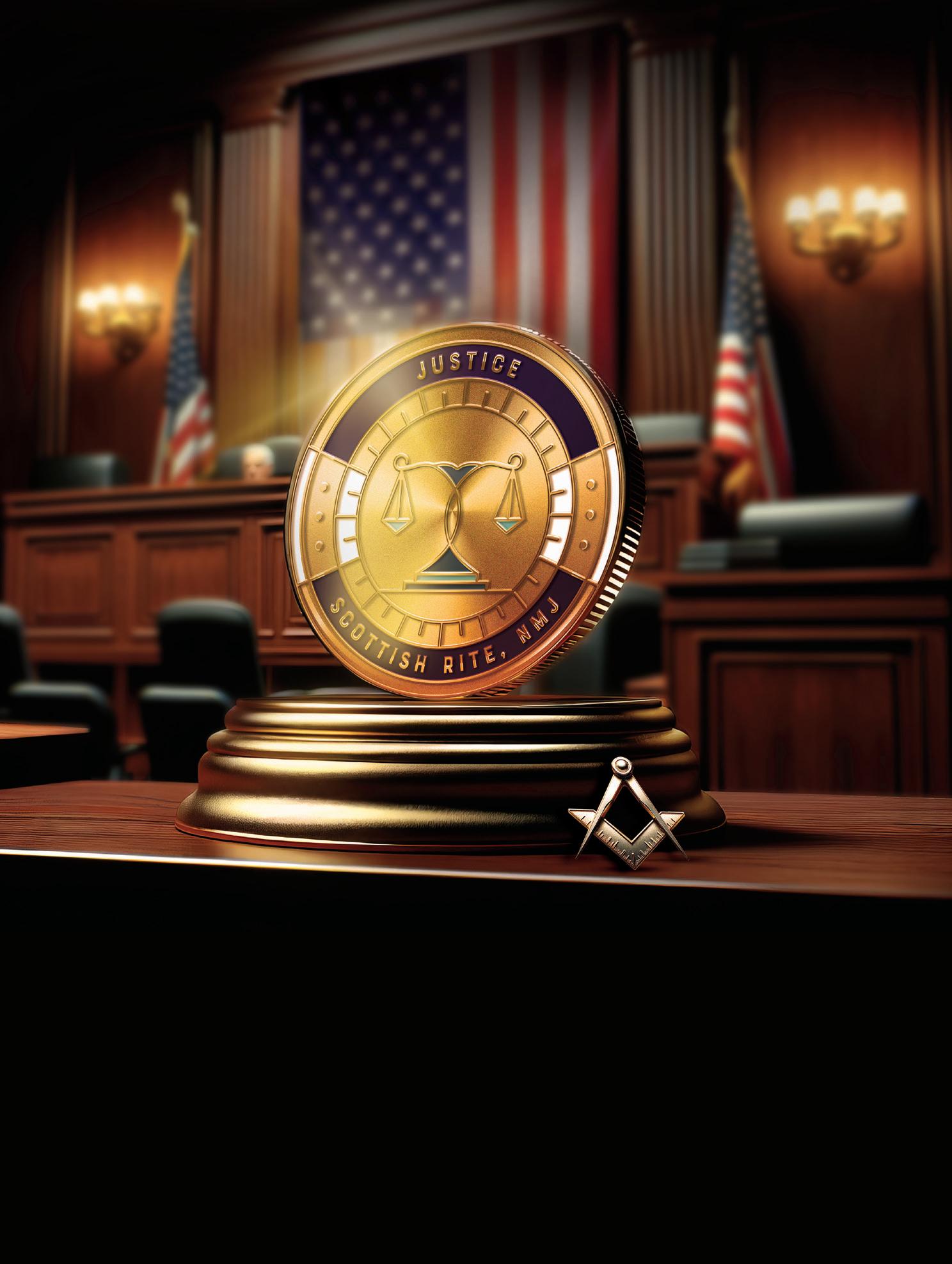


SRNMJ.ORG/BOOKS/PATHFORWARD
DID YOU KNOW 61% OF AMERICAN MEN WOULD CONSIDER JOINING FREEMASONRY?
Our new book, The Path Forward, provides data-driven insights about what these men want out of Freemasonry and how we can connect with them to grow and sustain a thriving Brotherhood.
Purchase the book at TheMasonicMarketplace.com or on Amazon today!
The Northern Light P.O. Box 519 Lexington, MA
Northern P.O. Box 519 Lexington, MA
02420-0519
02420-0519






































 by Michael Glen Boyd, 32°, HGA Valley of Danville, Illinois
by Michael Glen Boyd, 32°, HGA Valley of Danville, Illinois




 by PJ Roup 33°, Editor, Active for Pennsylvania Member Committee on Ritualistic Matters
by PJ Roup 33°, Editor, Active for Pennsylvania Member Committee on Ritualistic Matters











































































































